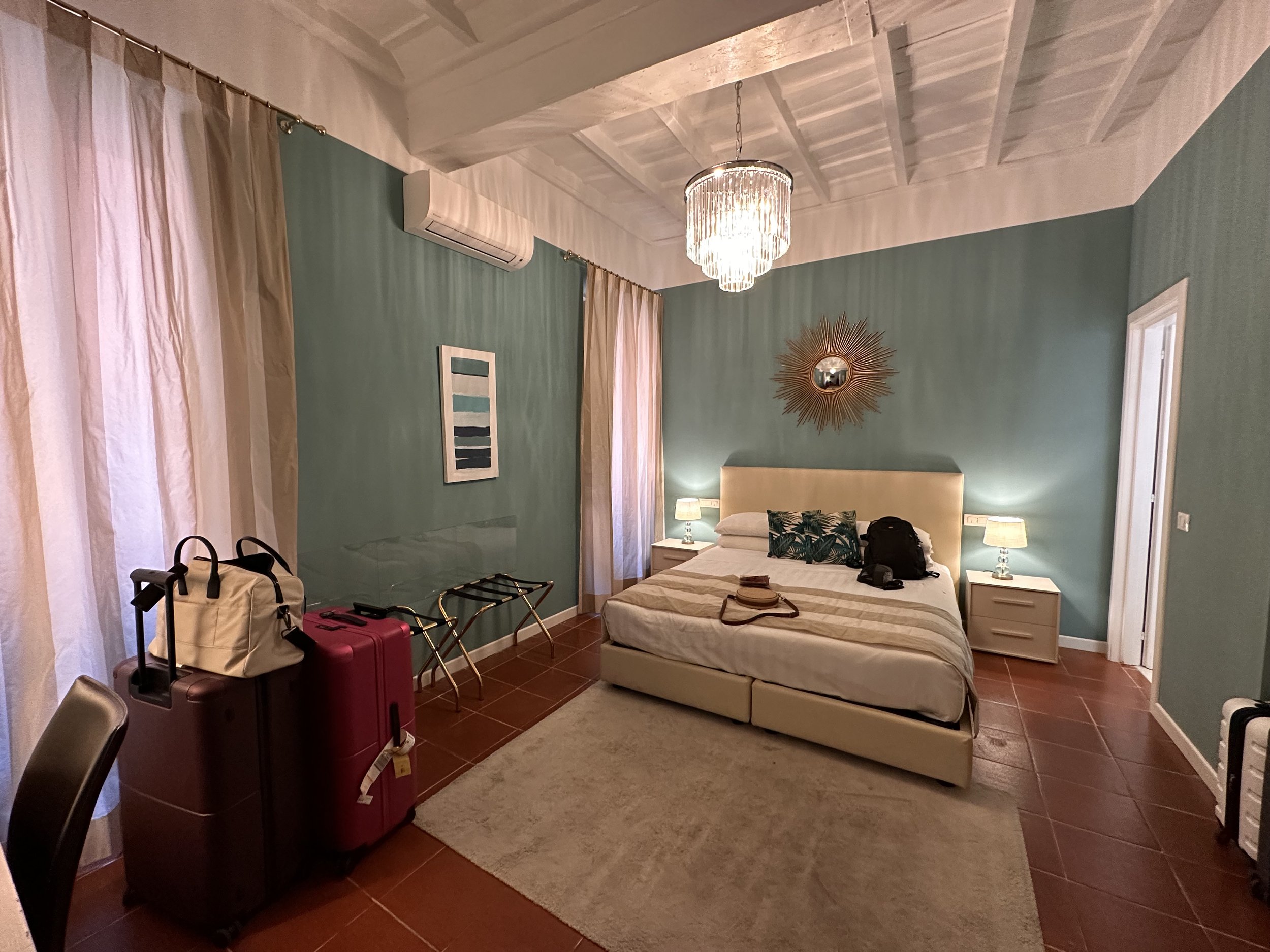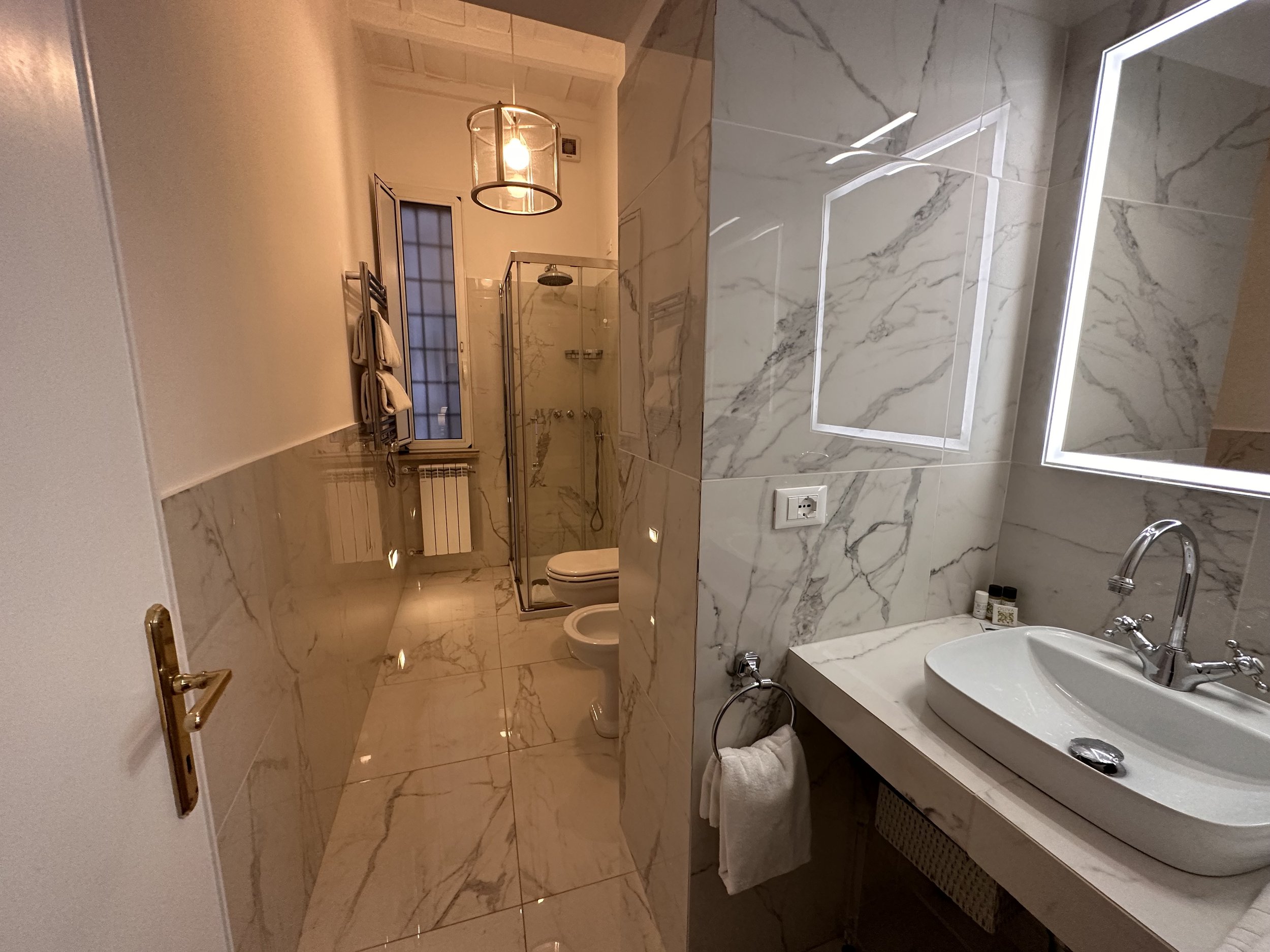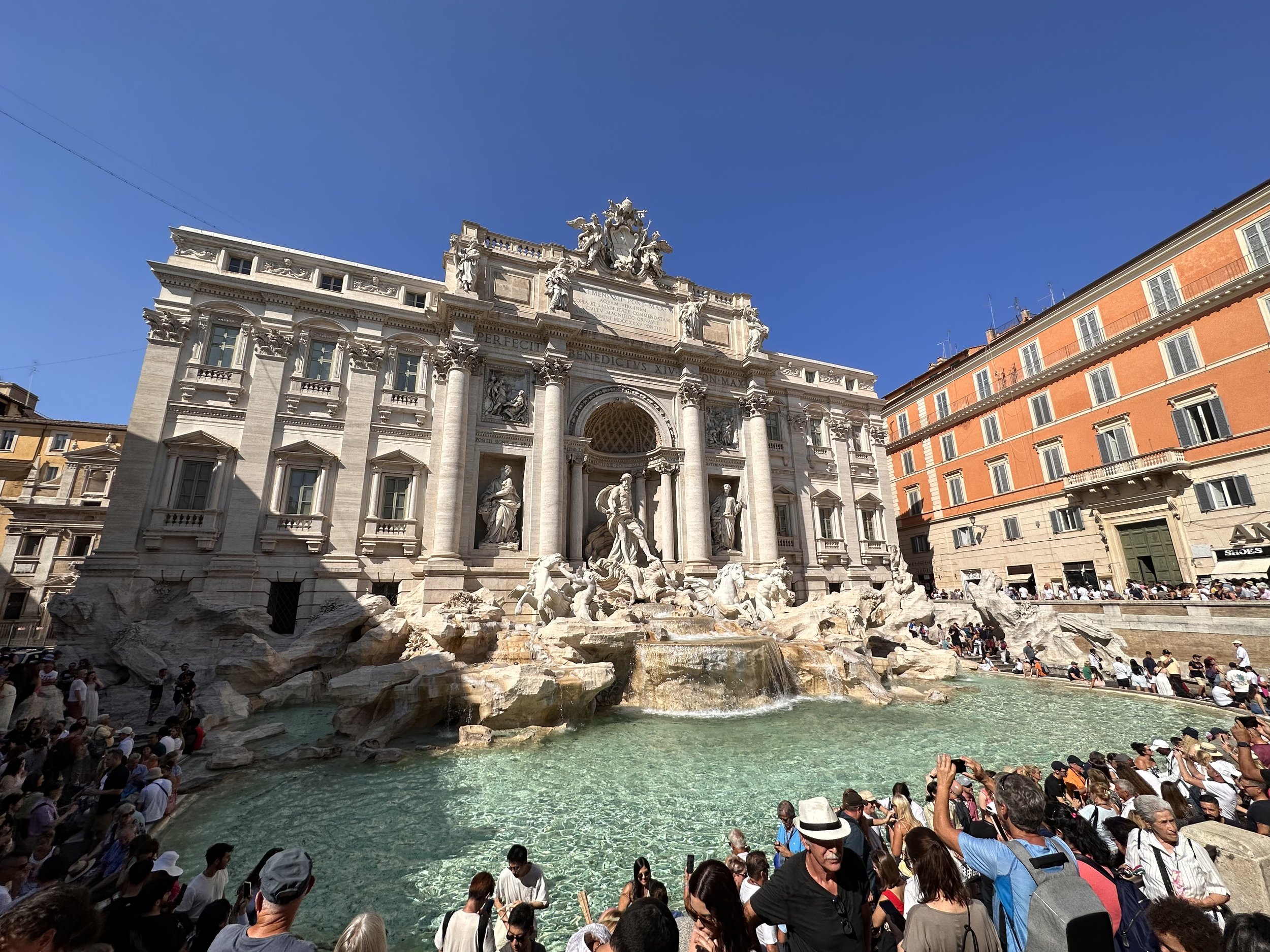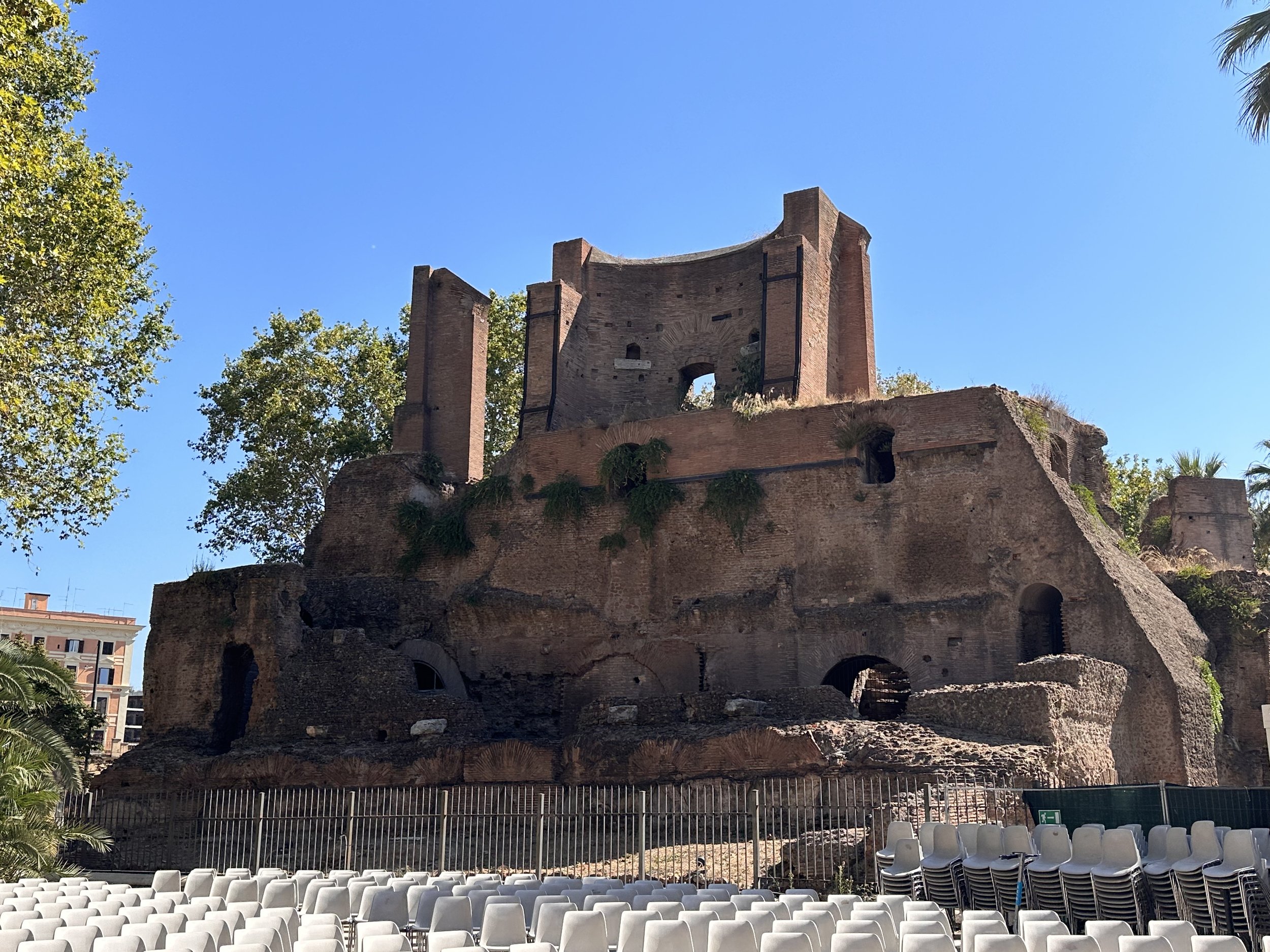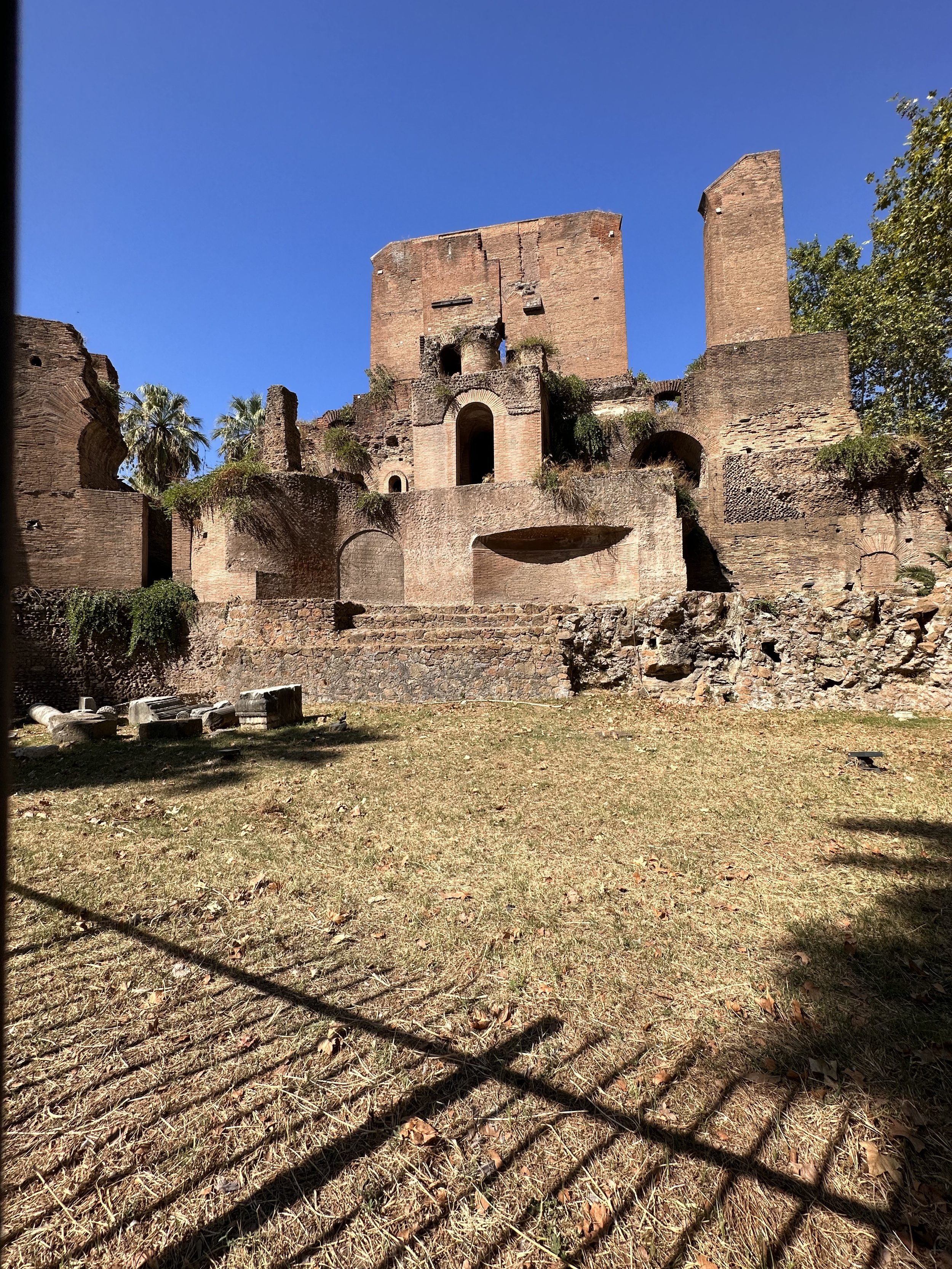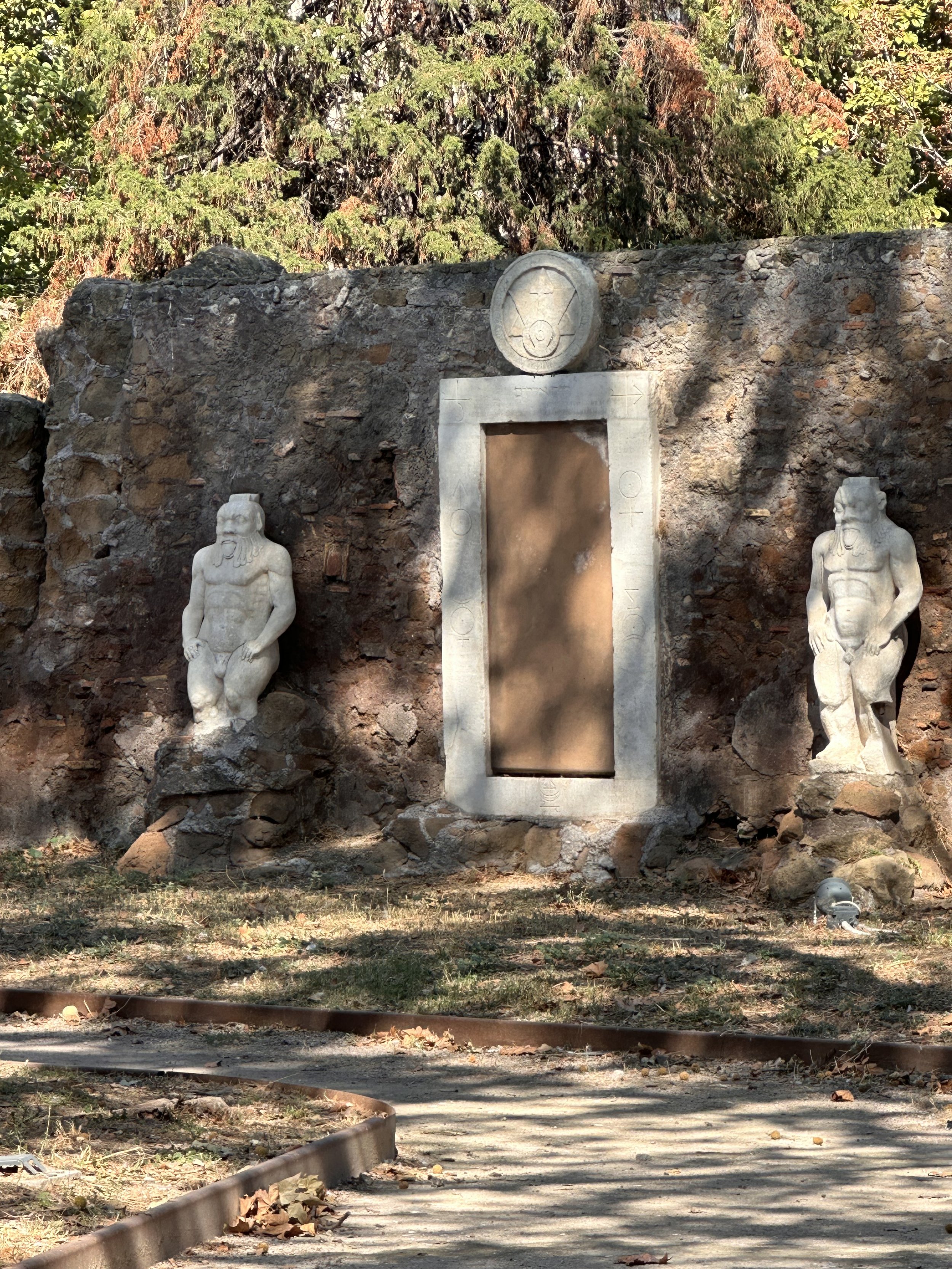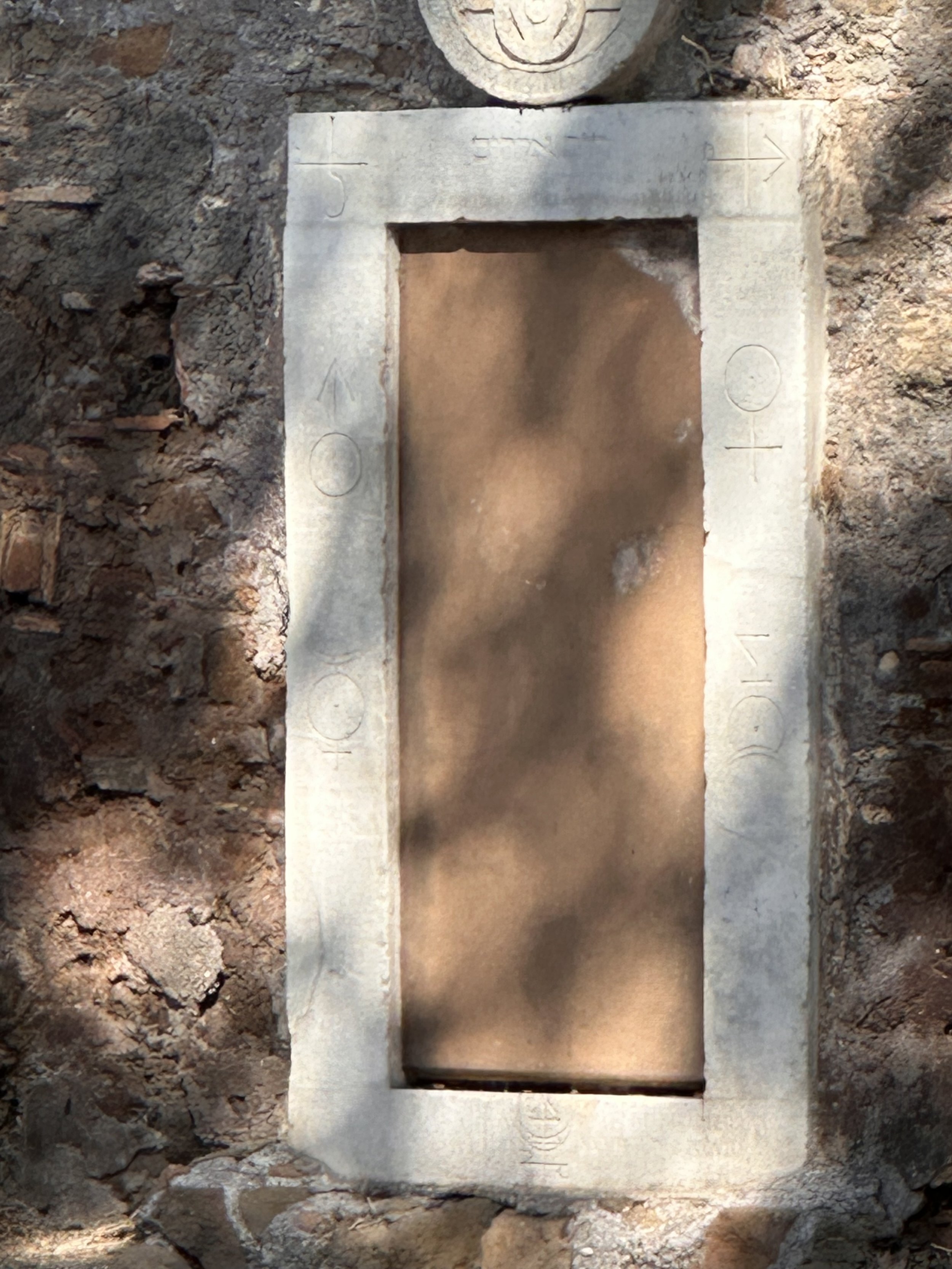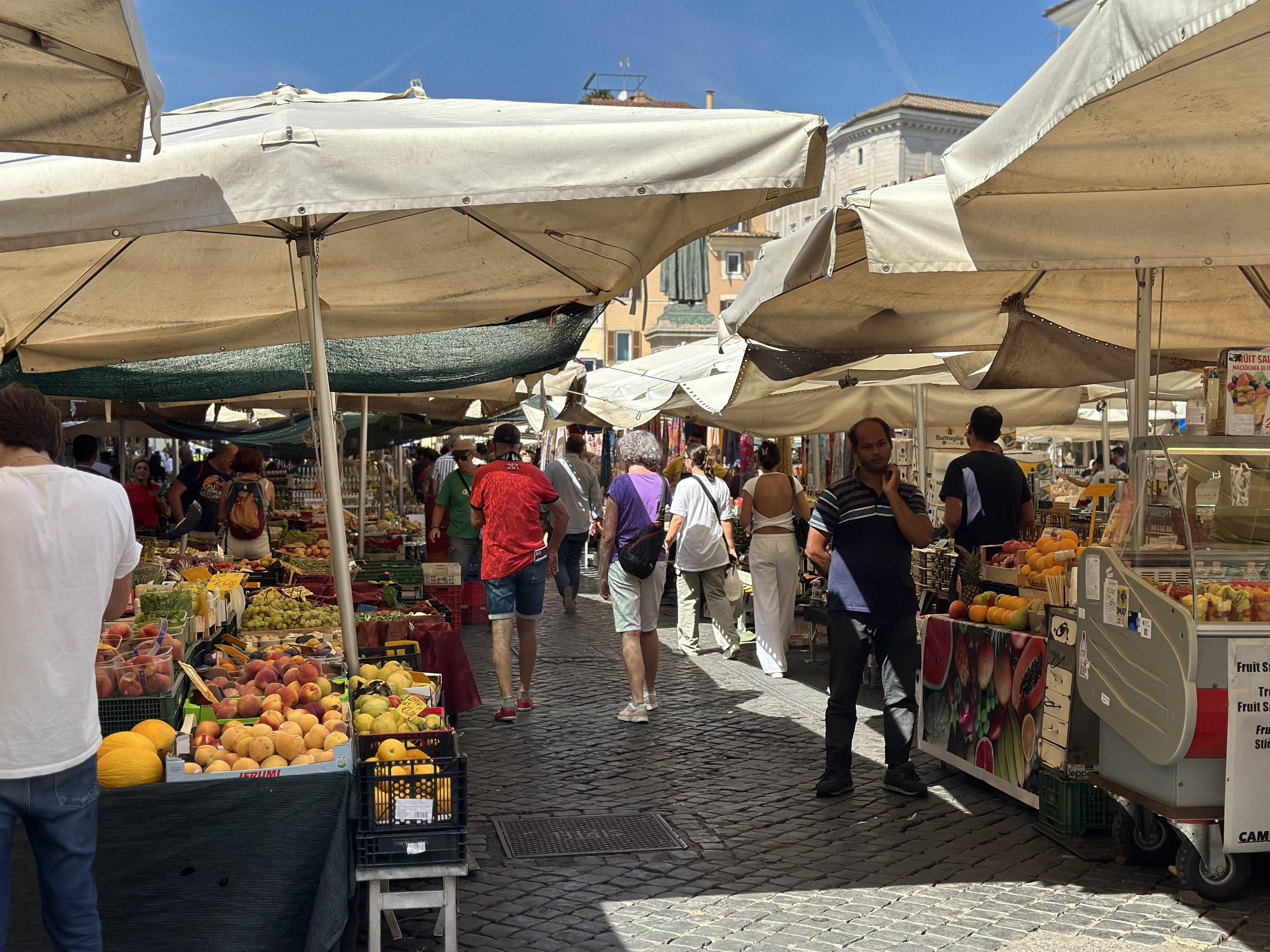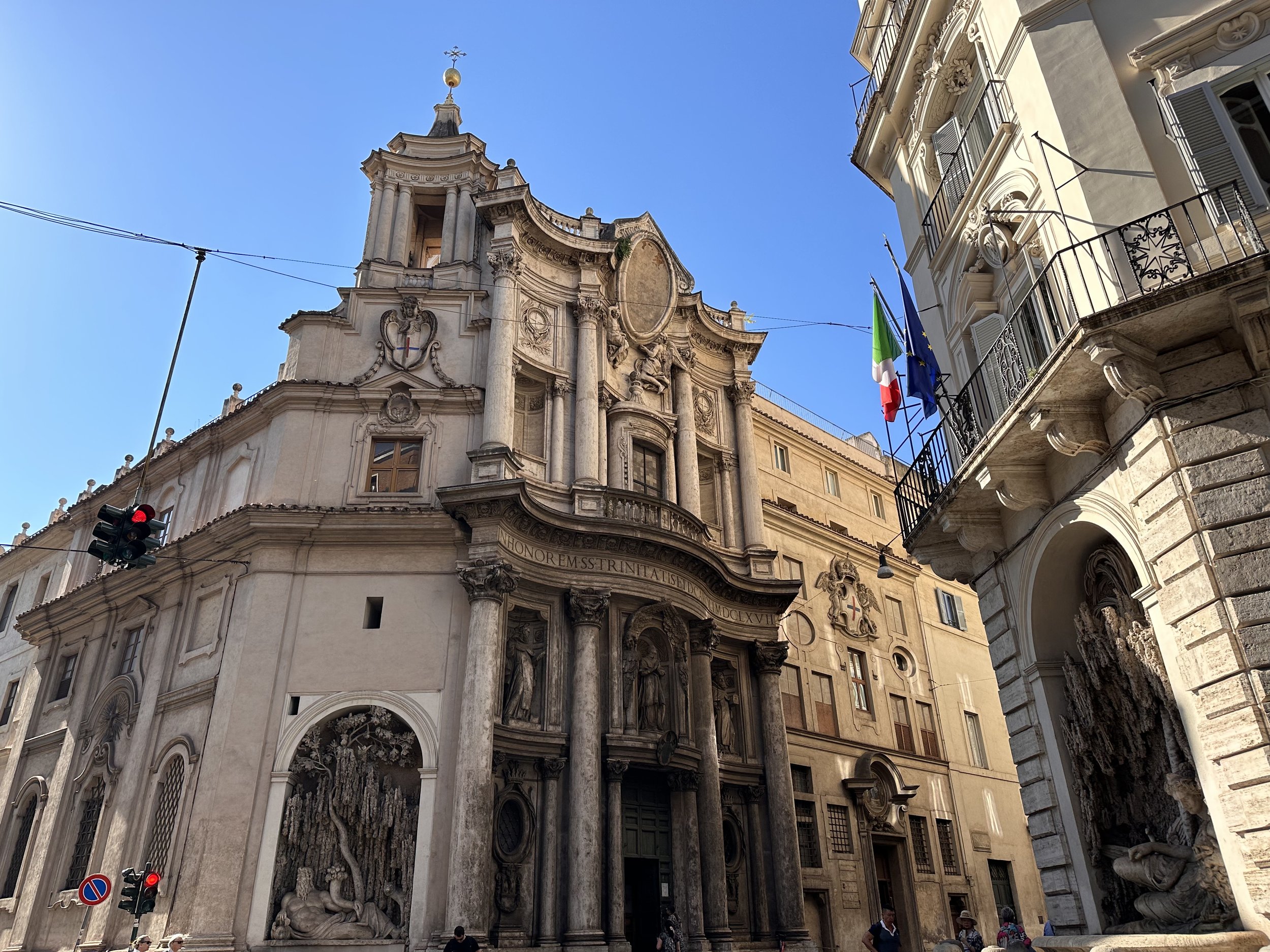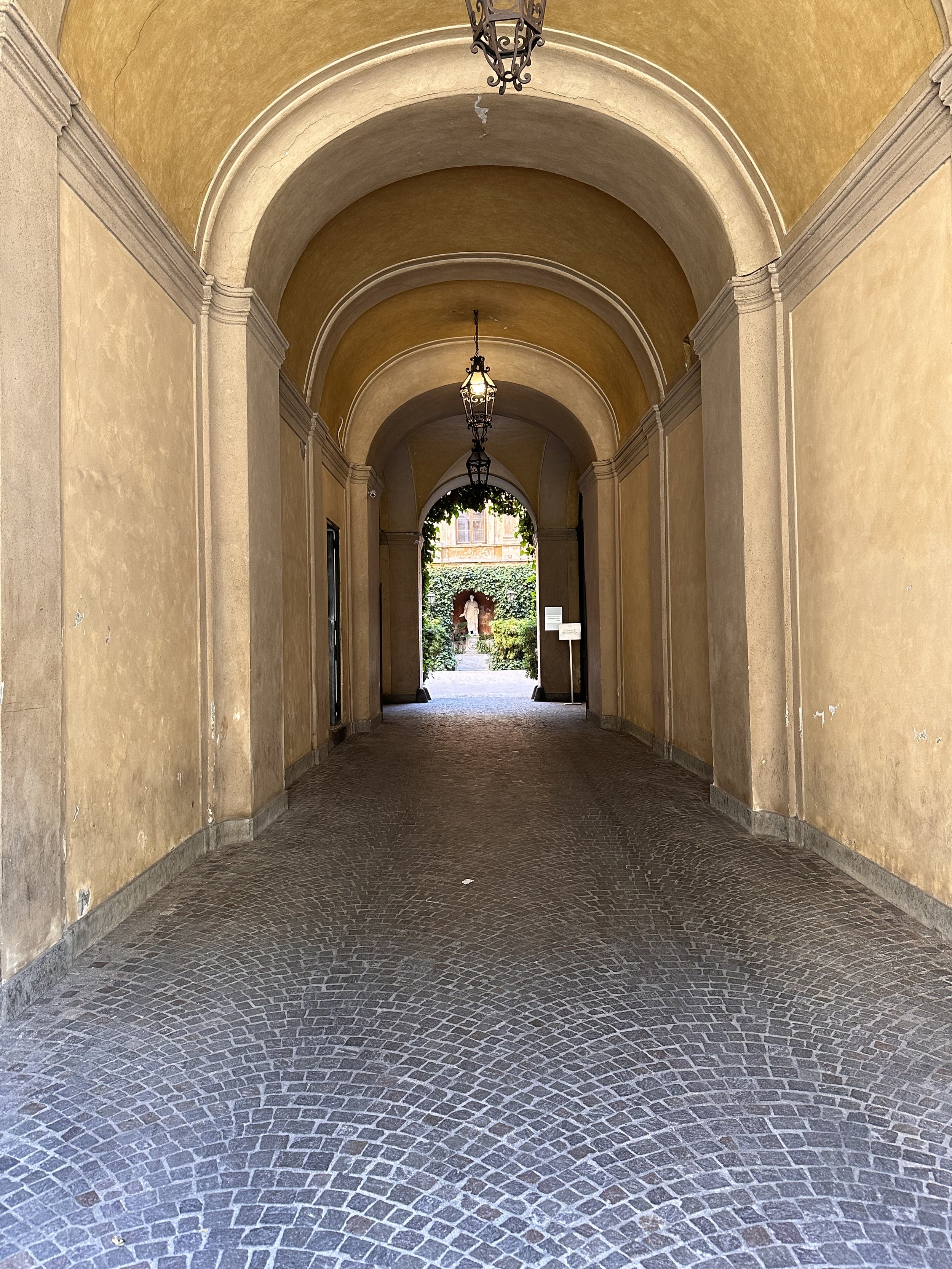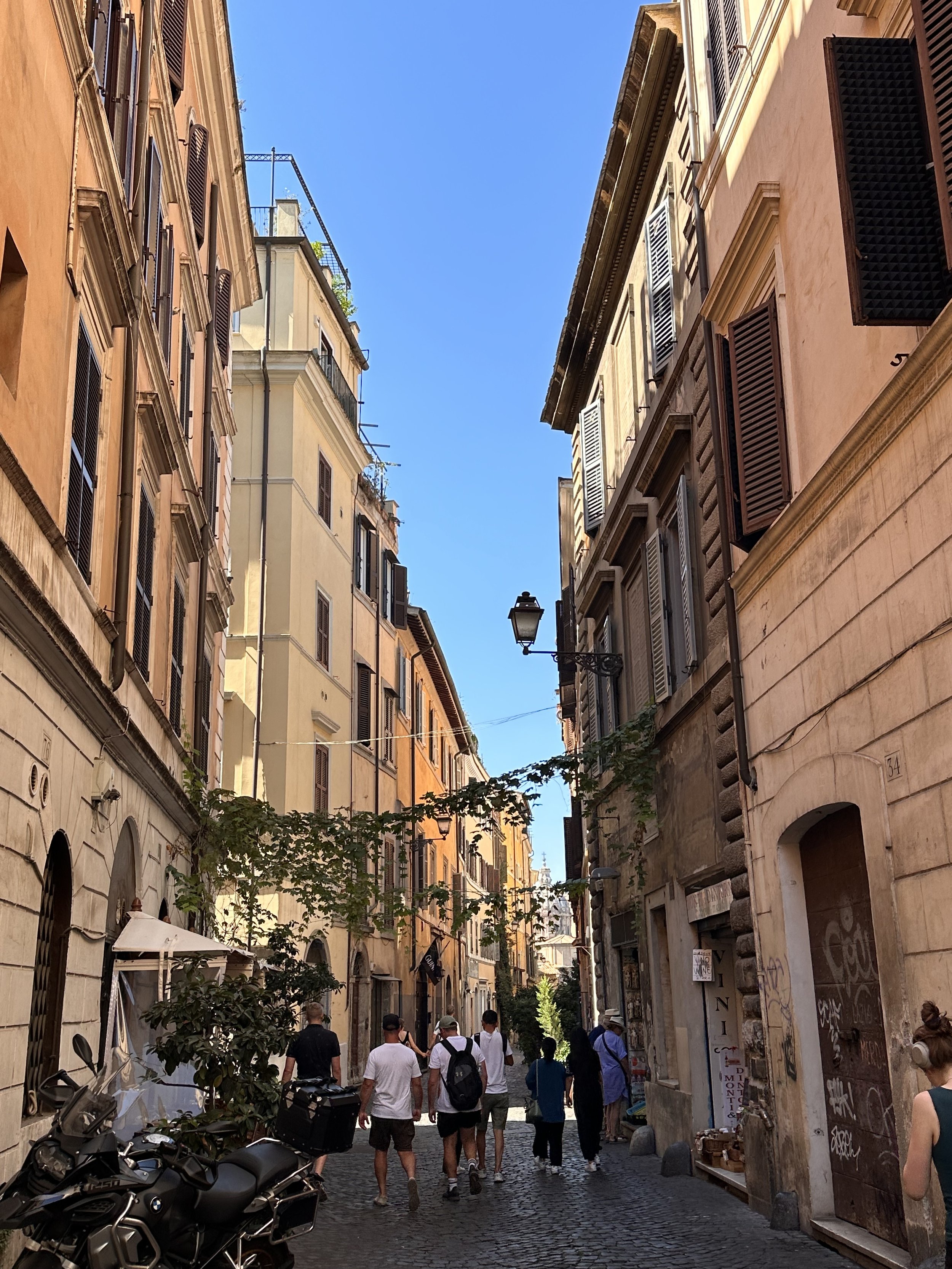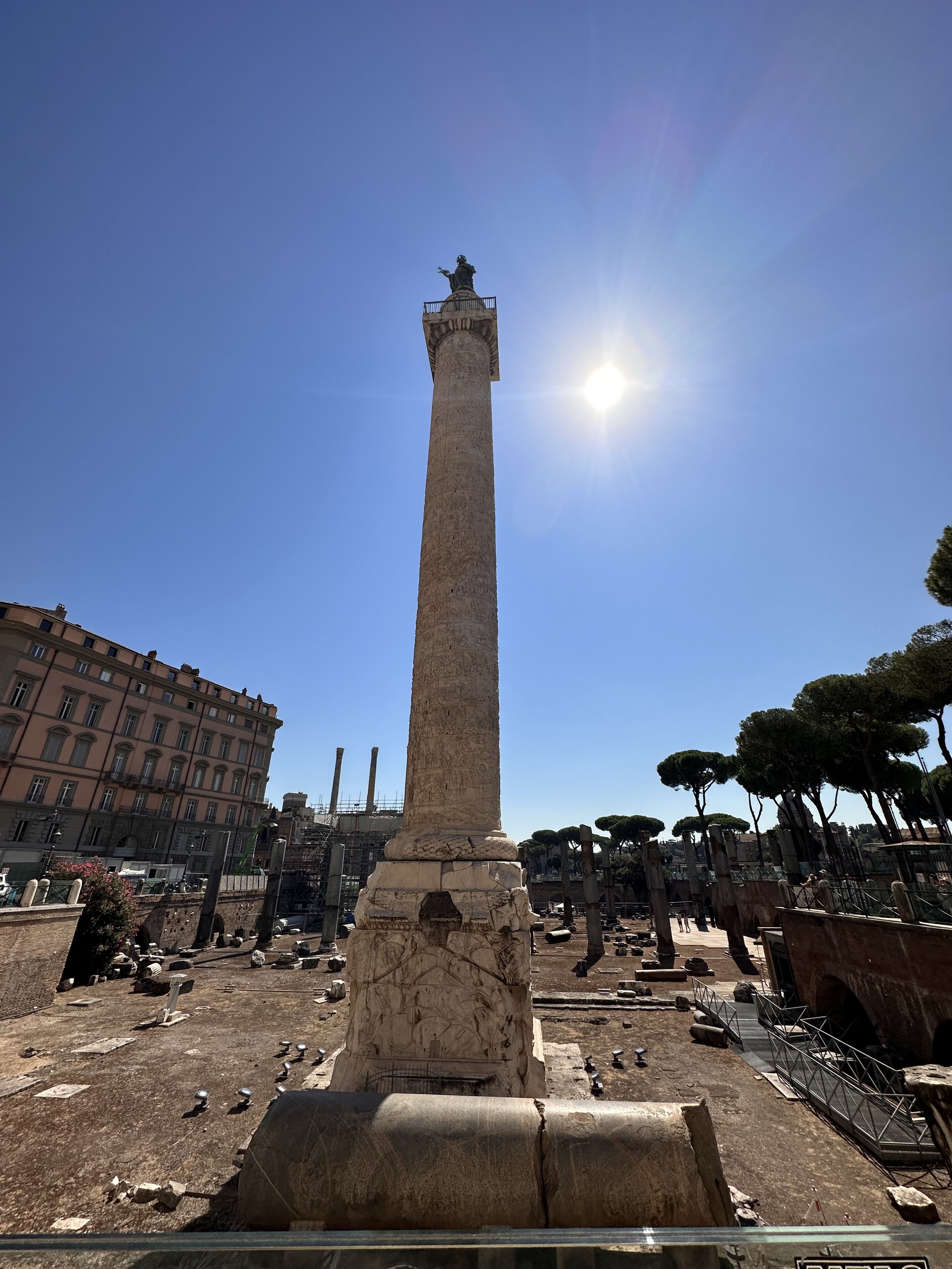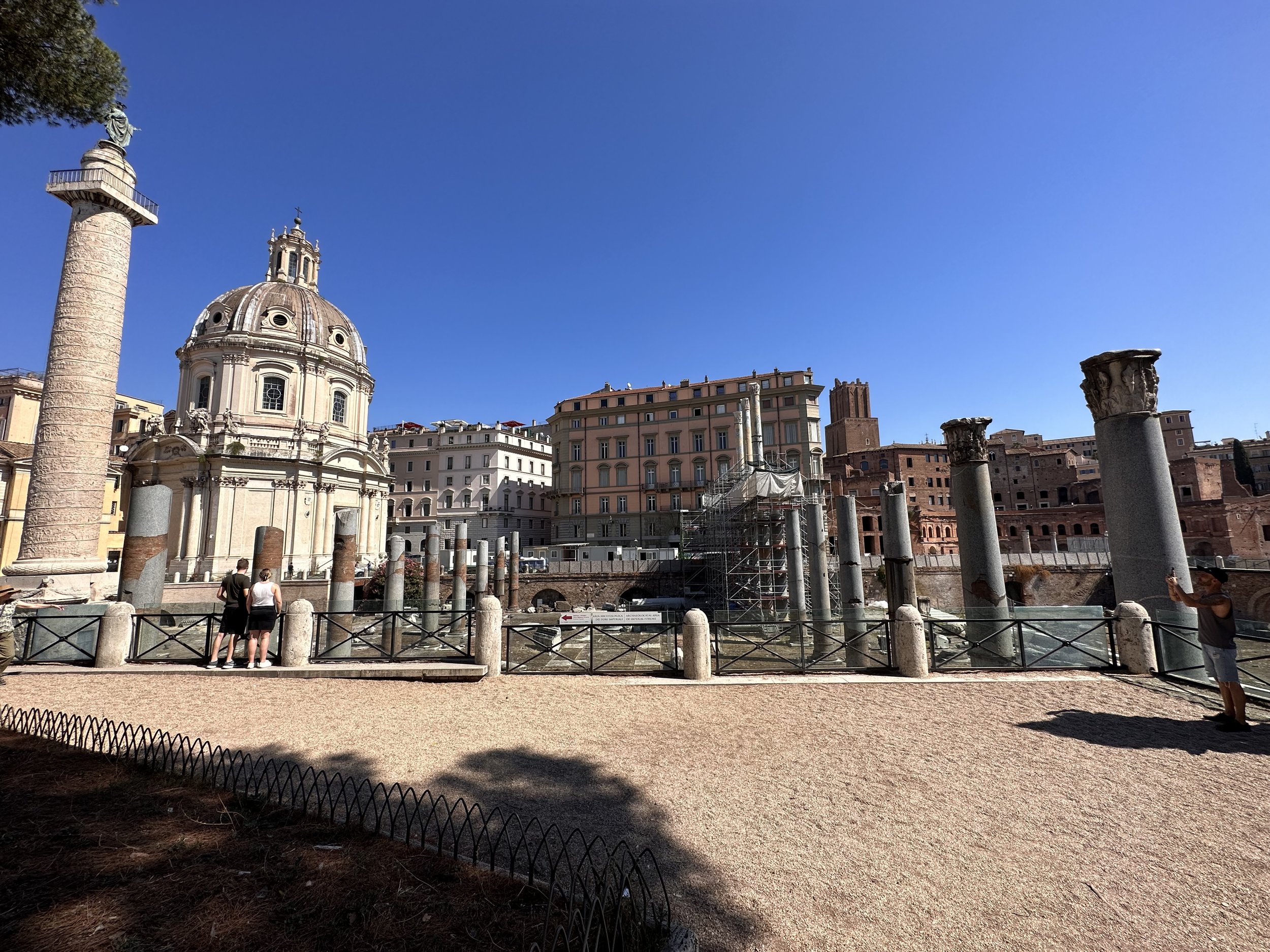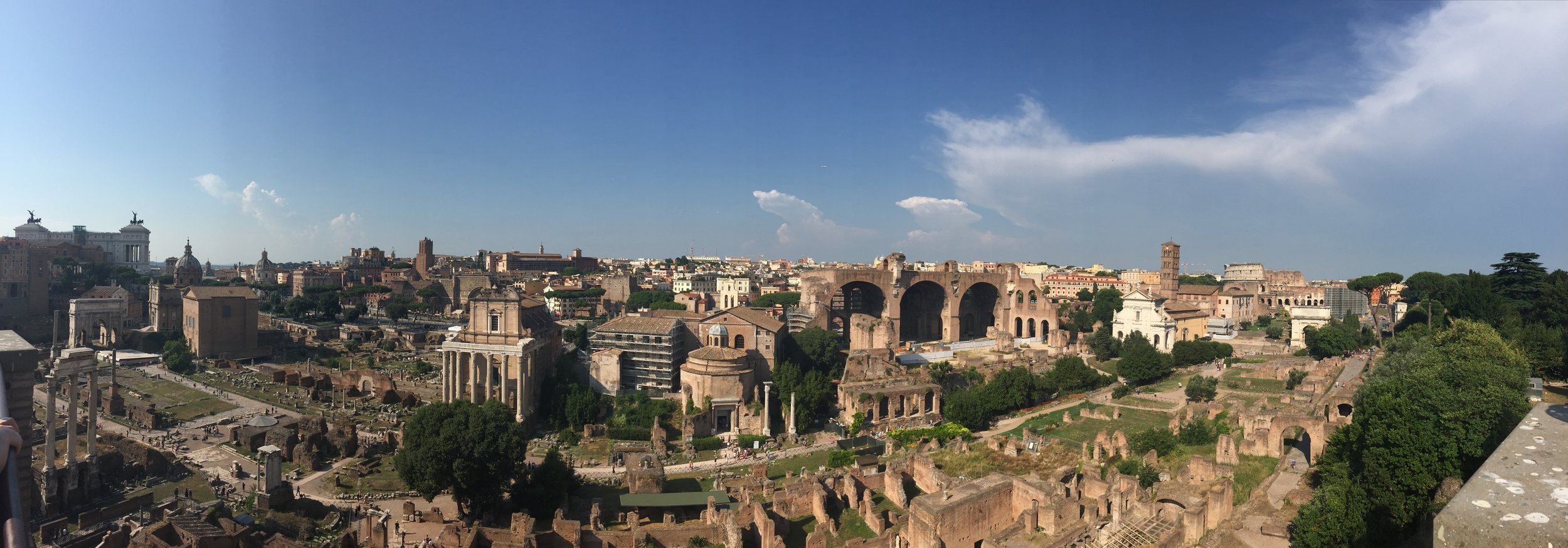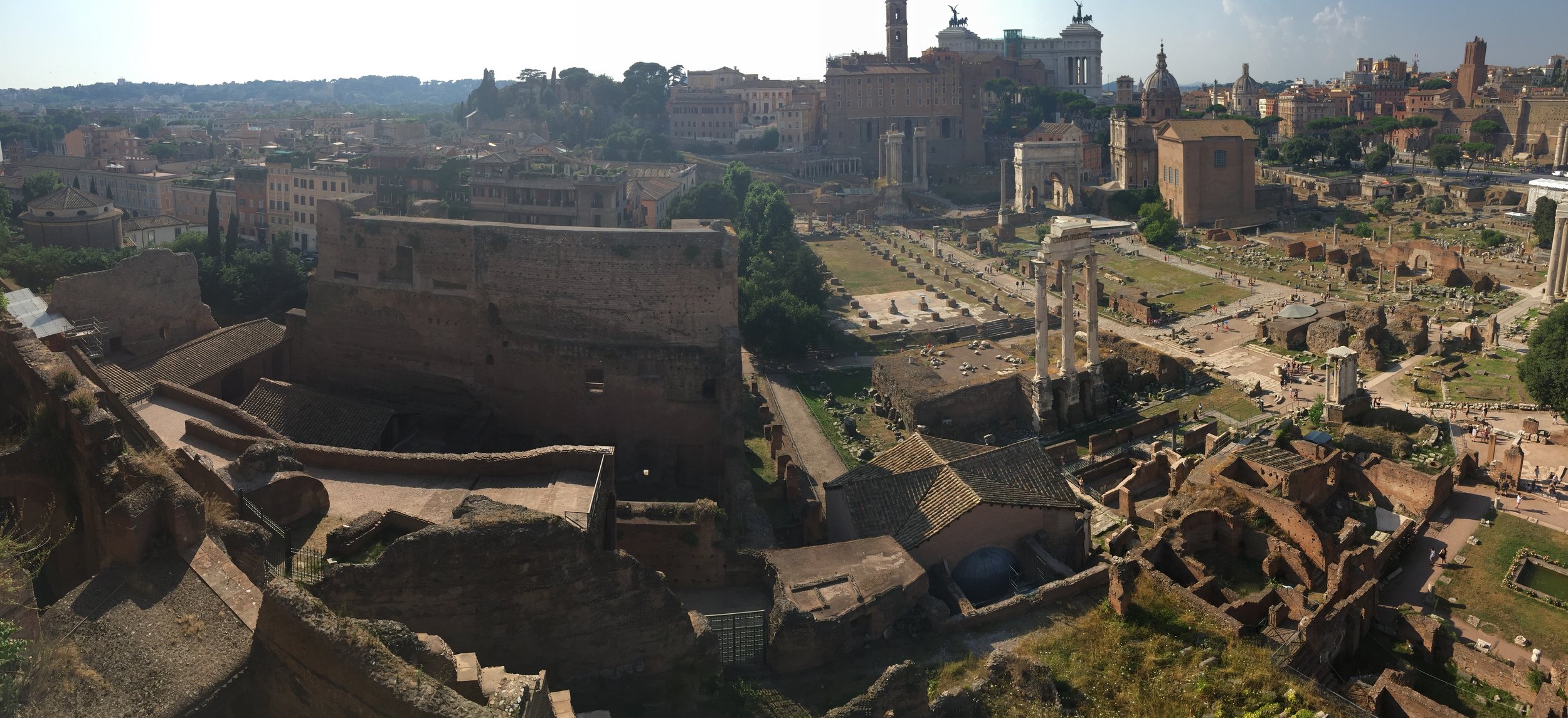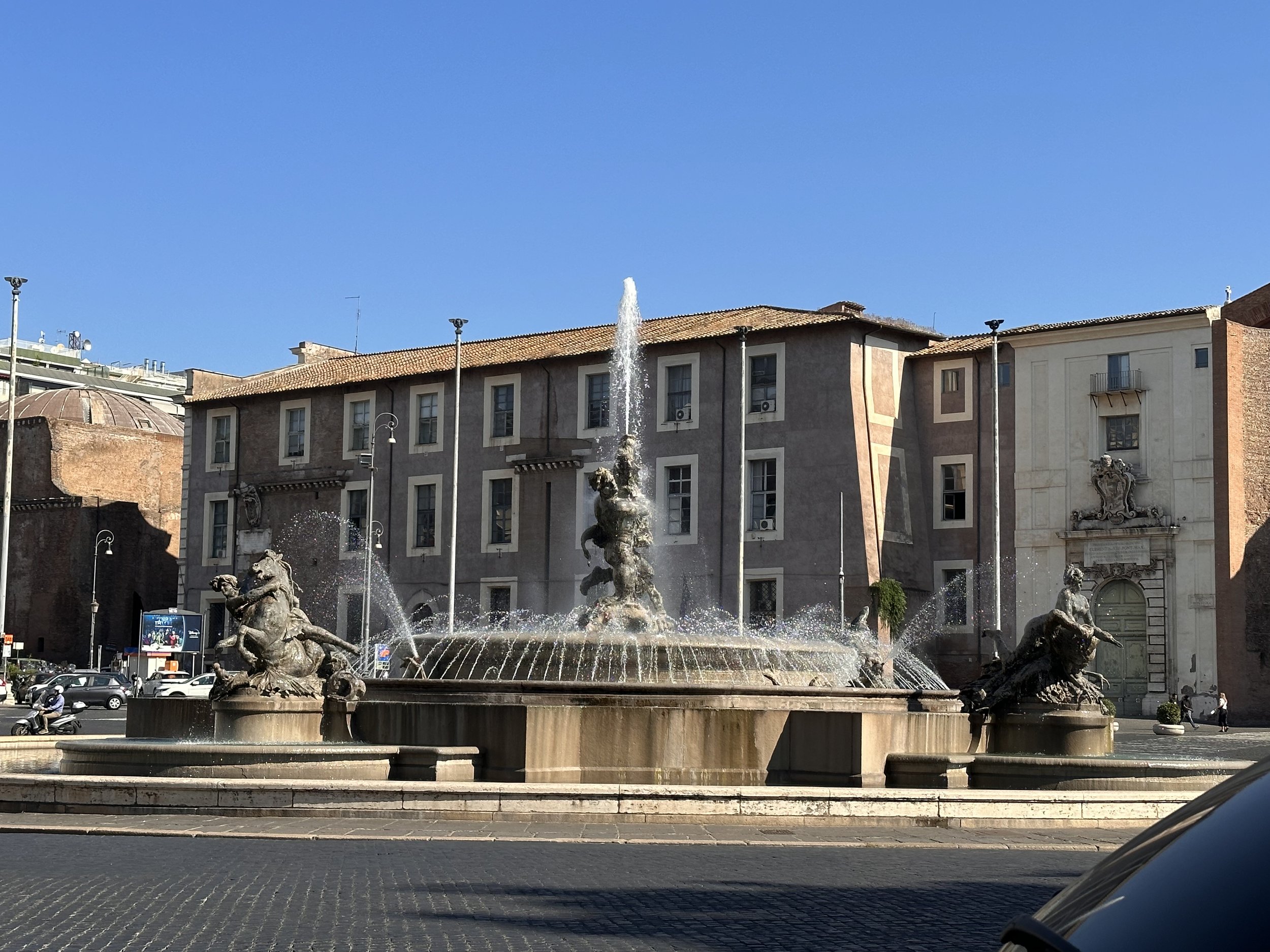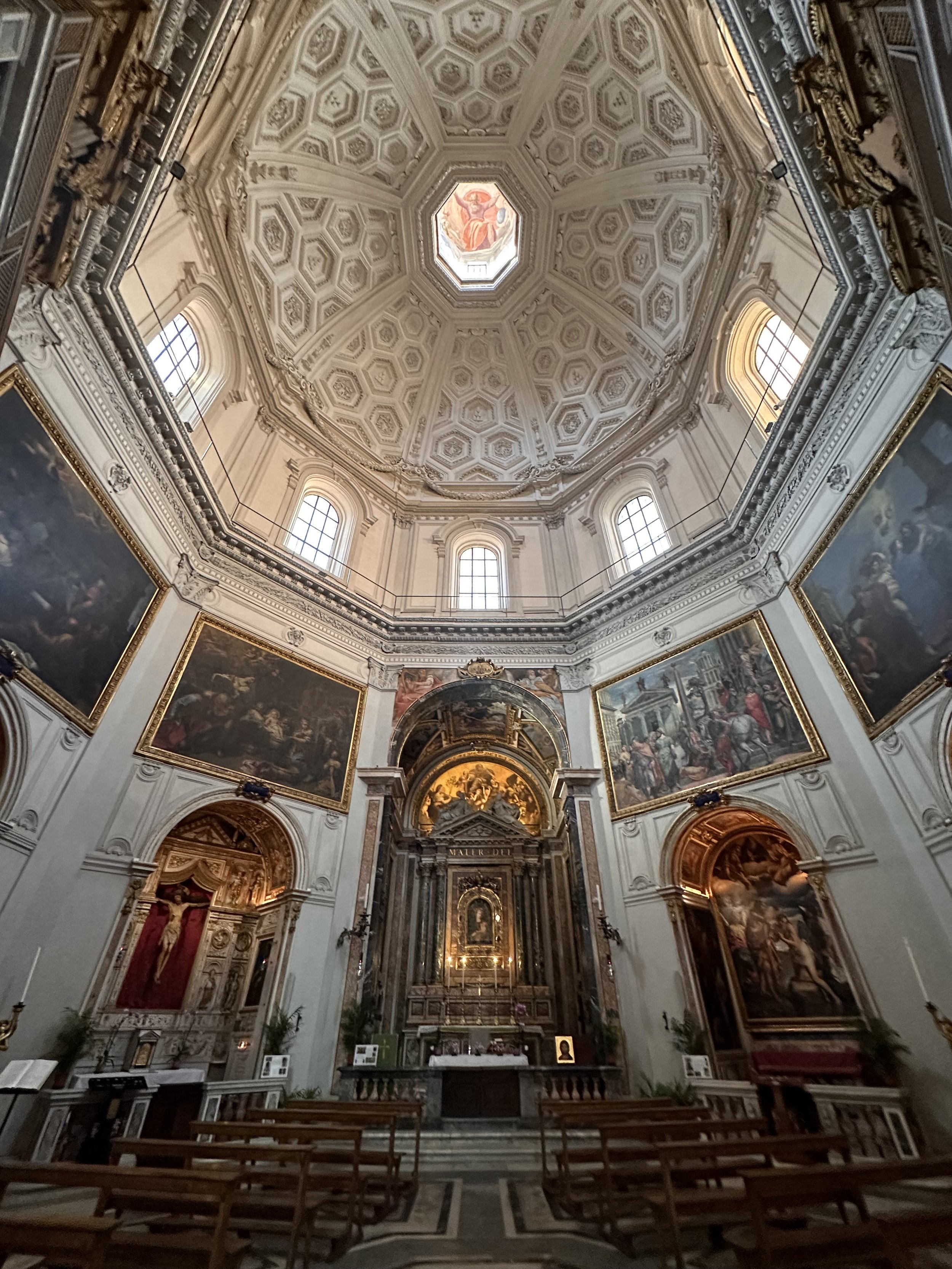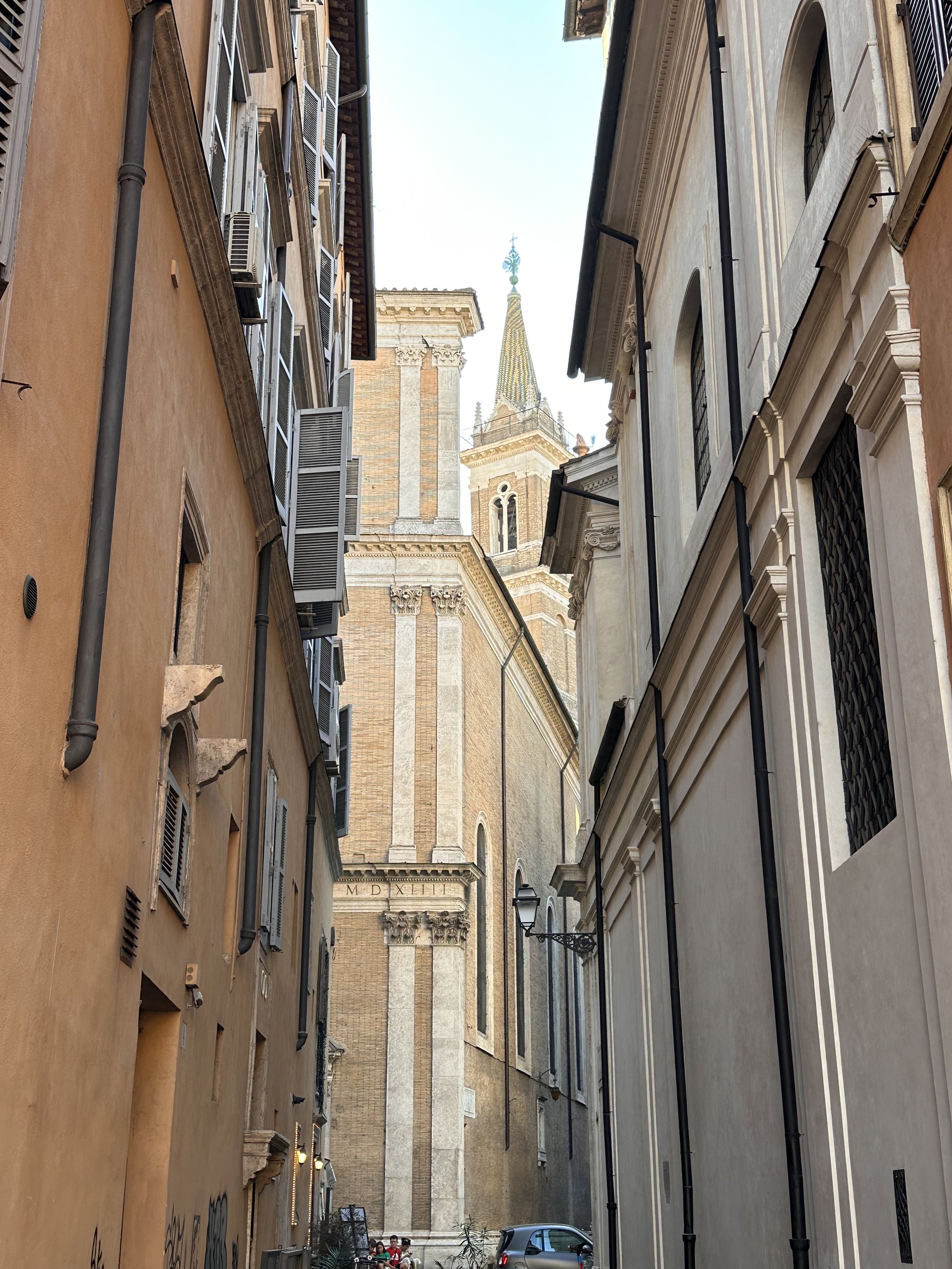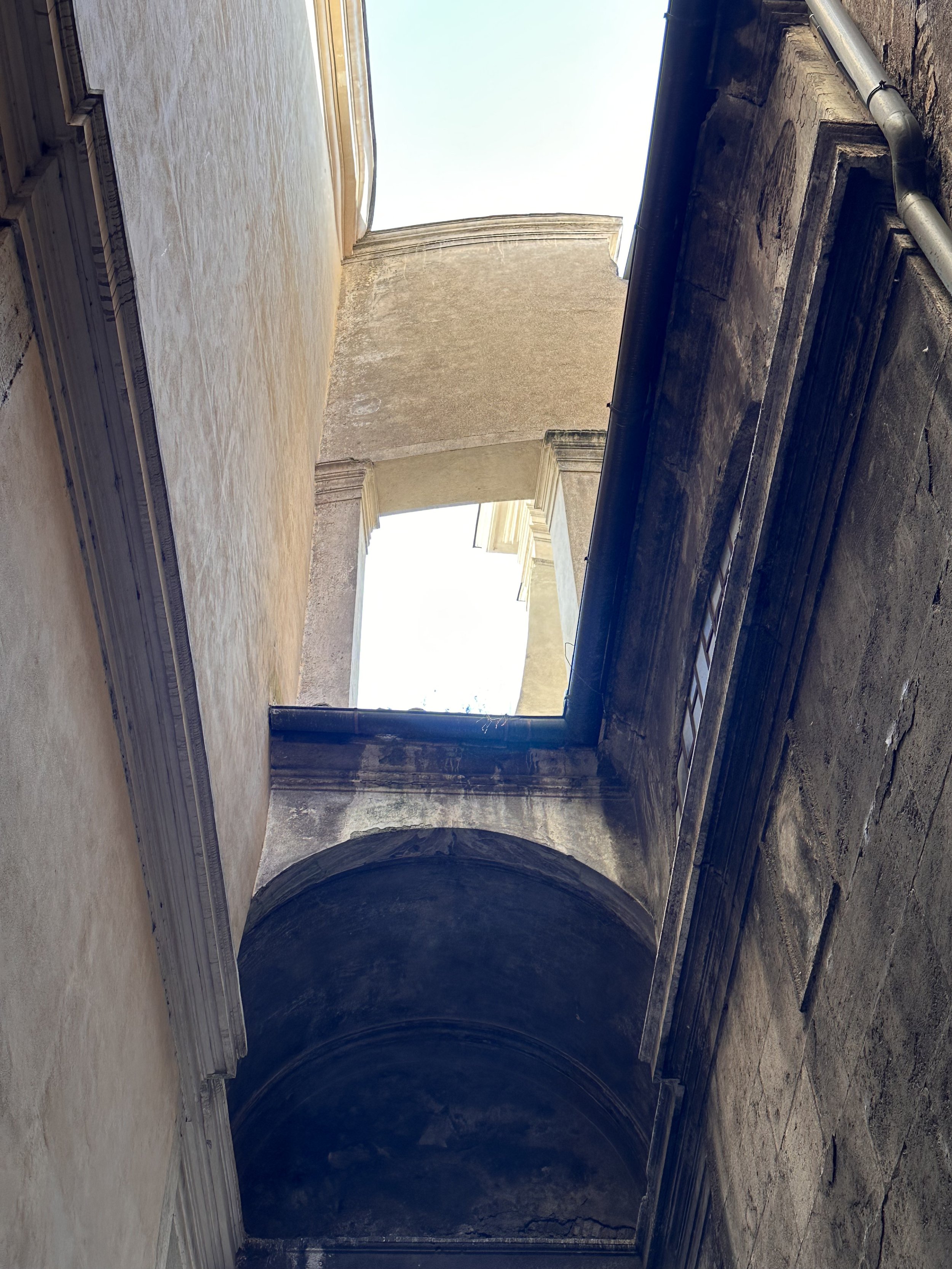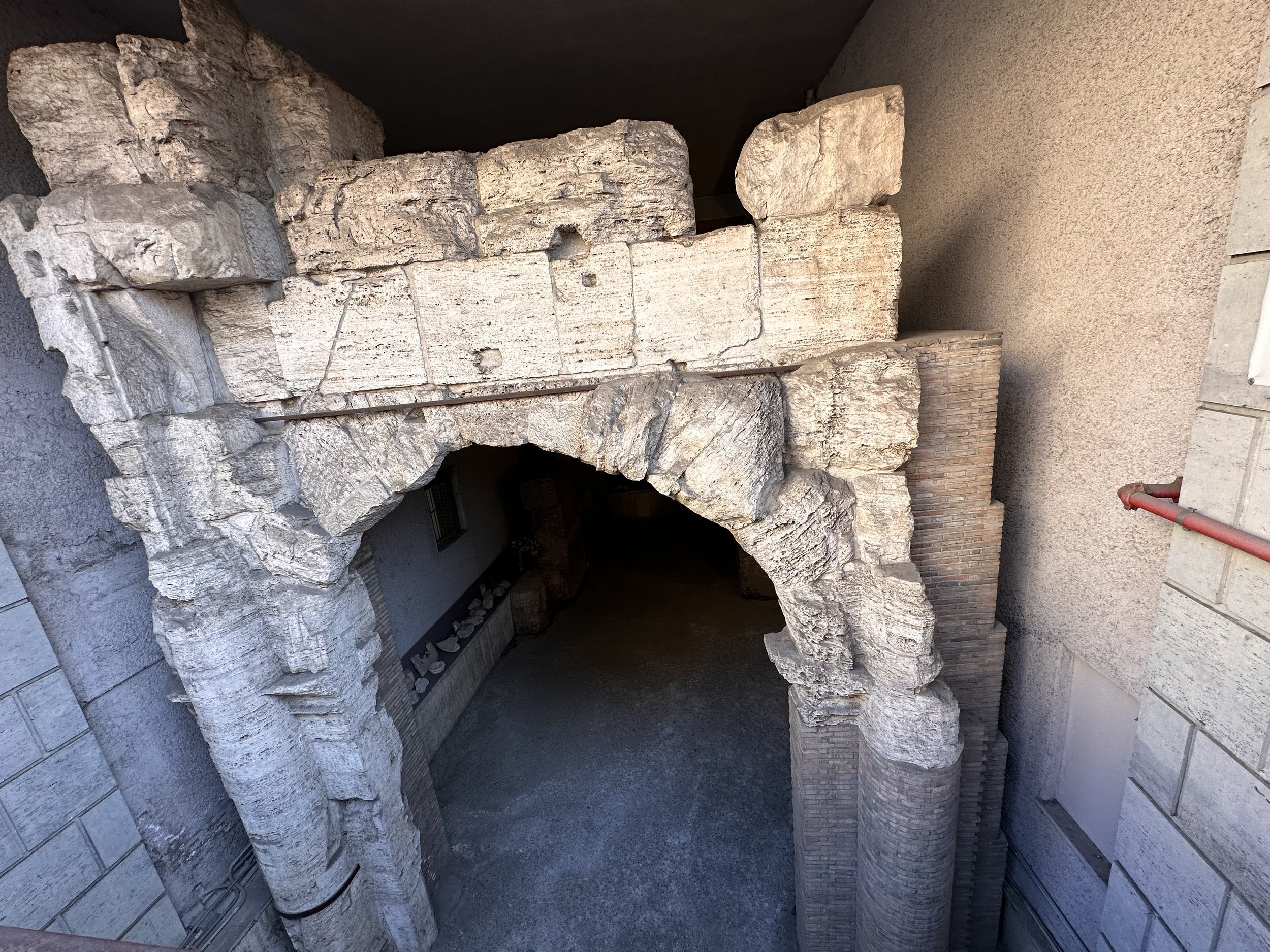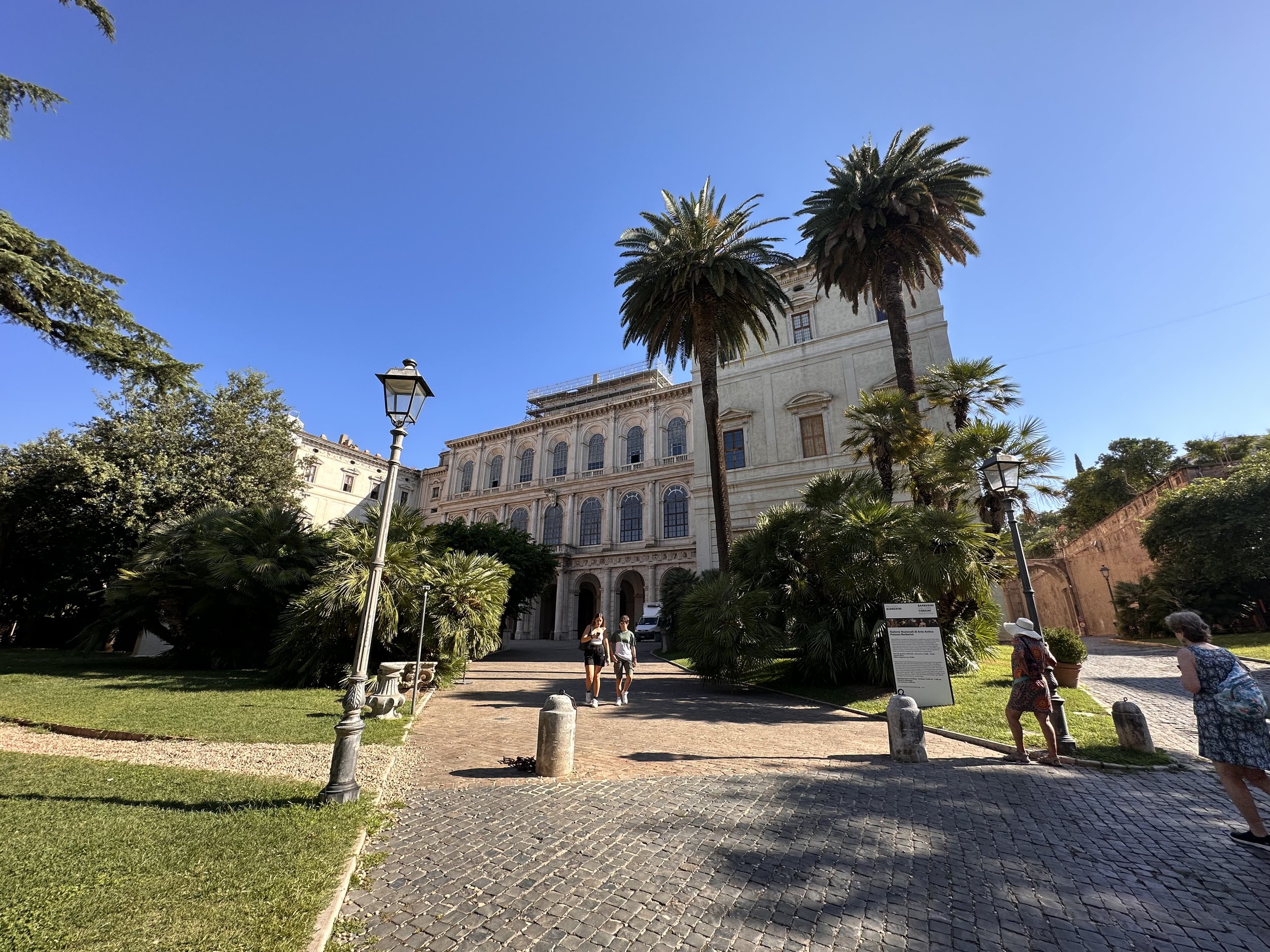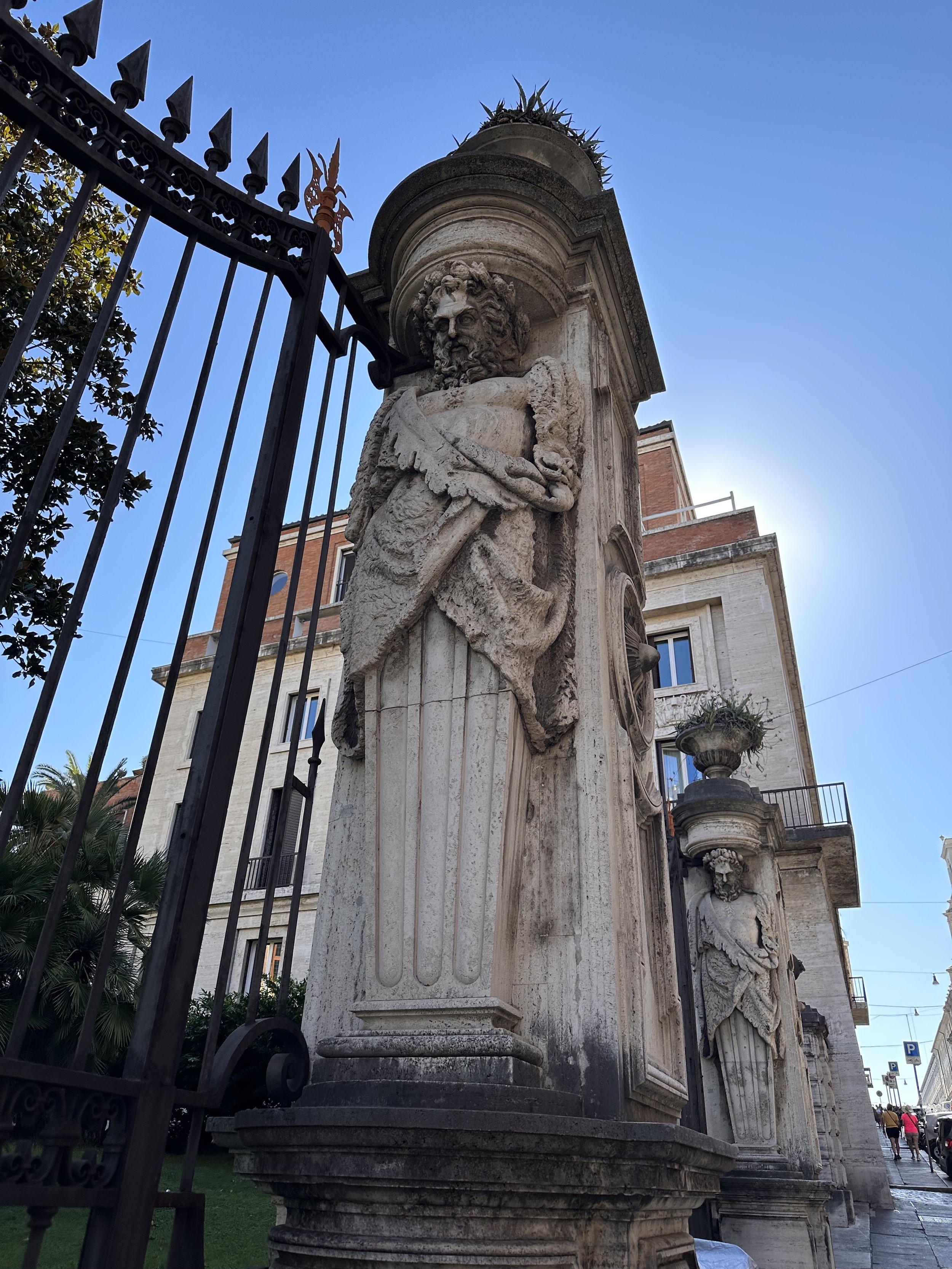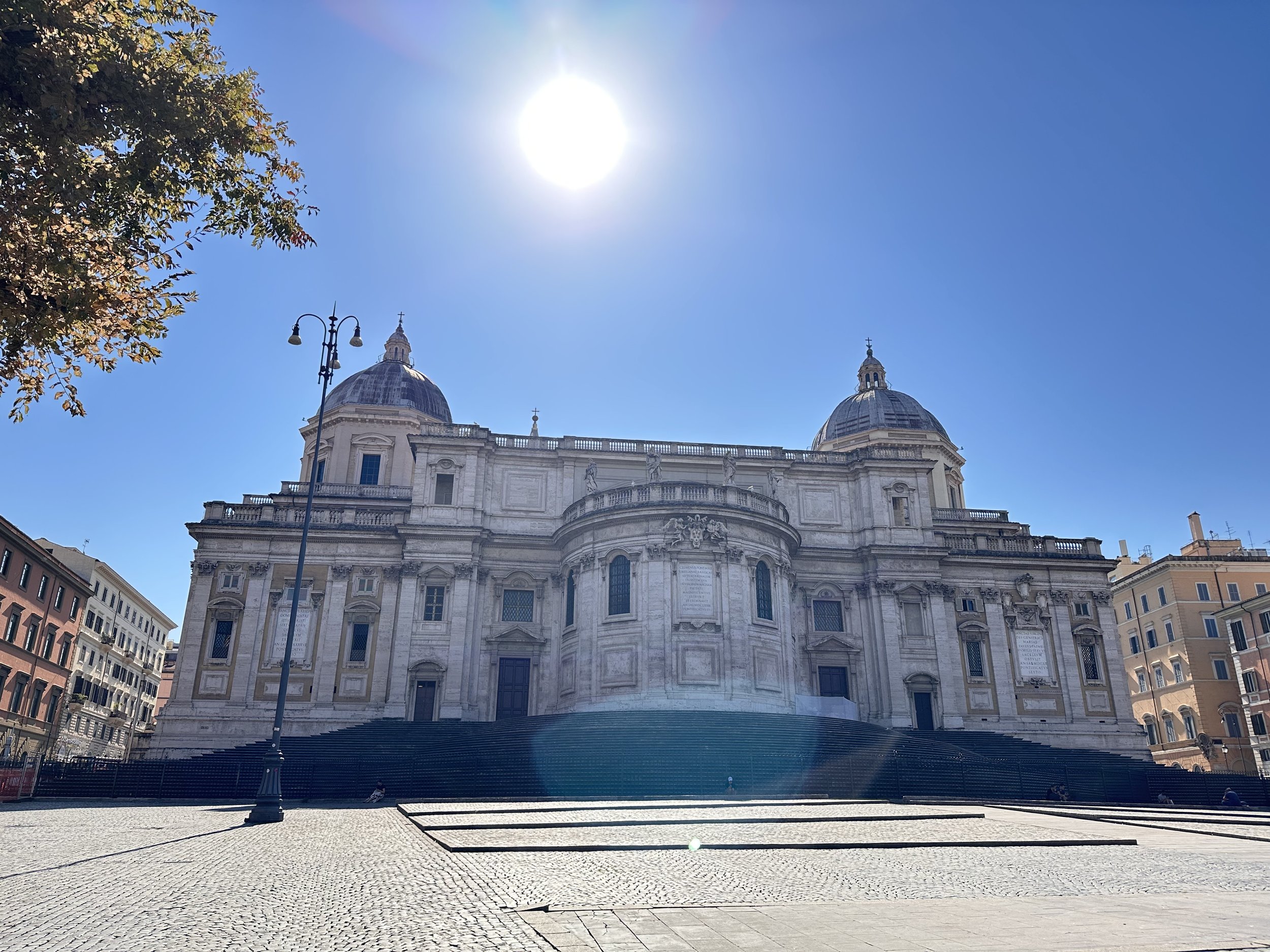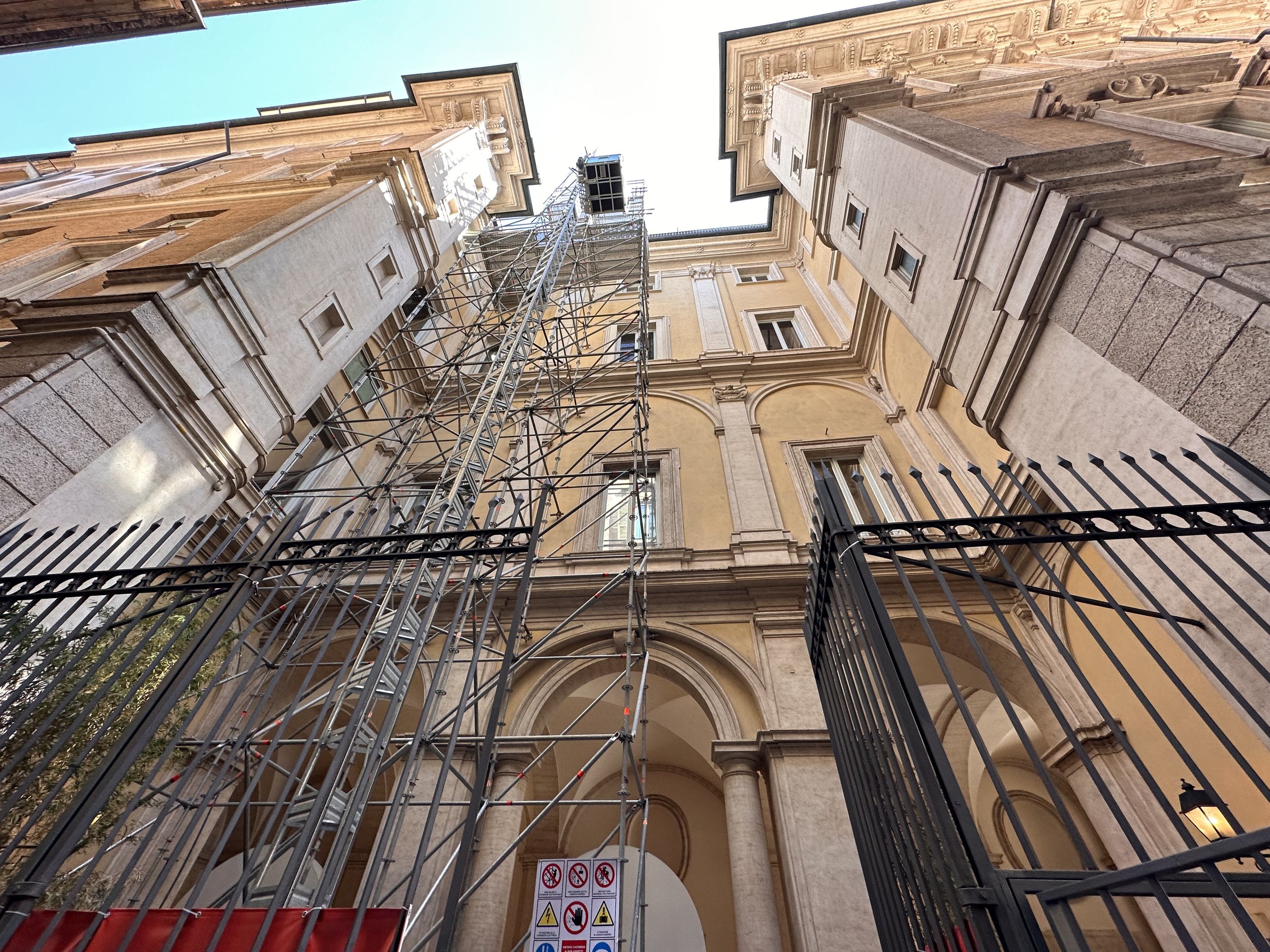Exploring Rome, Italy
Note: This post has been updated on September 14, 2023
Time needed in this city: 3-4 nights (includes time for day trips)
Rome is known as one of the most beautiful, walkable cities in the world. Each time we go, more history has been uncovered, which makes it an endless treasure trove of exploration.
With that being said, the influx of people coming into the country, both for tourism and migration, have made the city not as vibrant as it once was (there’s more on that at the end of this post). Should you go? Absolutely! Just make sure to be aware of your surroundings at all times.
The below information is a complete guide of the best places to stay, the top rated places to dine and drink, and all there is to see and do. We’ve also included transportation tips, as well as a summary of the history of this expansive city!
Jump To:
Where to Stay
Belsiana House
16th century boutique hotel, located near the bottom of the Spanish steps on Via Belsiana - one of the most fashionable areas of Rome.
As you can see from the photos, the room is spacious with a gorgeous bathroom.
We chose this hotel for its rating, that it’s family-owned, and is close to nearly everything we wanted to see in a few days. What makes it even better is the service:
They communicate, via WhatsApp from the time you book your reservation to when you check out.
They offer a car service at very competitive rates
They can help you secure tours of Rome
They will send you a text filled with restaurant recommendations
other recommendations
Where to Dine & Drink
We’ve included the top-rated restaurants in Rome that have at least 4.5 stars and above, as well as a great selection of gluten-free places!
53 Untitled
Roman & spanish-style tapas with wine
AcquaRoof Terrazza Molinari
A rooftop lounge with panoramic views of Villa Borghese
al42 by Pasta Chef rione Monti
Homestyle pasta carbonara & meat dishes in a compact, no-frills venue with stool seating.
Almato
Polished restaurant serving sophisticated Italian fare & tasting menus in minimalist surrounds.
Altrove Ristorante
Roman cuisine
Antica Pesa
High-end Roman restaurant & celebrity haunt for romantic fine dining in cozy rooms or walled garden.
Argot
A speakeasy using 18th century medicinal methods of using alcohol, as well as utilizing an ice carving technique where the ice is demineralized and carved on the spot in a sphere or diamond shape.
Armando al Pantheon
A long-standing restaurant serving hearty, traditional Roman fare in a wood-paneled dining room.
Bar San Calisto
Italian beers, long drinks & cream-topped coffee granita at a down-to-earth bar opened in the 1960s. (It’s rumored they have the best coffee in Rome.)
Beppe e i Suoi Formaggi
Cozy store for gourmet cheeses & cured meats also offering a dine-in area for tasting plates & wine.
Blackmarket Hall
Bruschetta, burgers & veggie dishes served in a stylish, old-world eatery that has unique cocktails.
Chiostro del Bramante
While this is also an exhibition space, there’s a hidden cafeteria up the painted steps (that you can’t miss) that is anything but usual. NOTE: If you want any drink with milk in it and have a soy allergy, then just stop by for the art.
Club Derriere
A speakeasy
Divinity Restaurant & Lounge Bar
A rooftop bar and lounge with incredible views of the Pantheon
El Maìz
Venezuelan Street Food - Compact restaurant dishing up traditional Venezuelan street food amid a laid-back ambiance. They can make their Arepas and Empanadas gluten free.
Enoteca la Torre
Sophisticated Mediterranean dishes, with tasting menus & wine pairings, in an old-world villa (once owned by the Fendi family).
Fafiuché
They serve wines from Piedmont and Pugliese-inspired snacks, plus a few hot dishes like lasagna and the bagna cuda, a warm garlicky anchovy dip with vegetables. If you stay for dessert, order the bruschetta Fafiuchè that takes a slice of toasted bread and tops it with thin shavings of cioccolato cremino, a drizzle of olive oil, and a sprinkle of sea salt.
Faro - Luminaries of Coffee
Artisanal coffee with sustainable origins, plus sandwiches, wraps & pastries, in a mellow setup.
Fiocco di neve
Gluten-free ice cream in classic & fruit flavors, plus coffee & affogato, to eat in or take out.
Giulia
Reimagined cuisine from Arbuzzo
Hostaria de' Pastini
Amazing traditional Italian with gluten-free pasta available!
Hotel Locarno
This historic hotel opened in 1925, and its bar has been a local favorite since the 1970s. Here, you’ll encounter actors, musicians, and scions of the oldest Roman families, who at happy hour can be found in the secret garden enjoying impressive cocktails and appetizers.
Il Goccetto
One of the oldest wine bars in Rome, they serve shared plates and a long global wine list.
Il Mulino ai quattro venti
This cozy family-run restaurant is on a steep street on the hill of Monteverde. They cater to your every fancy, whether you’re craving meat, fish, vegetables, dessert or all of the above.
INEO
Top-rated restaurant in Anantara, serving Abruzzo and Eritrean cuisine.
La Pasticciera
A dedicated gluten-free bakery.
Le Altre Farine Del Mulino
A dedicated gluten-free bakery
Mama Eat Lab
A dedicated gluten-free street food restaurant. Expect fried-chicken sandwiches, cones filled with fish and chips and even dessert options like donuts or fried pizza strips covered in Nutella.
Moma
A Michelin-starred restaurant located right in front of the U.S. Embassy, they serve inventive Italian dishes.
New Food Gluten Free
Born in 2013 and tucked in the Jewish Quarter, this little shop offers an amazing array of gluten-free goodies that are some of the most amazing we’ve had. HINT: Stop by Vogli di Pizza first and then walk the couple short blocks to here for a little dessert!
Osteria Da Francesco
Since 1957, this restaurant has been crafting delicious meals, including beef meatballs with black truffle, veal escalopes with ham and sage, and locally sourced lamb chops. The main course is best sandwiched between a rich pasta dish and the dessert of the day.
Piatto Romano
Traditional Italian dishes served for each day of the week (for example, on Fridays, they serve fish).
Pizza Trevi
Bustling pizzeria close to the Trevi Fountain offering pasta & Tuscan wines, plus a terrace. They have gluten-free options that those with Celiac rave about.
Retrobottega
Tasting menus featuring inventive dishes paired with wine, in a minimalist, edgy space.
Rimessa Roscioli
Refined Roman tasting menus & wine pairings at a cozy venue with a cobbled terrace.
Risotteria Melotti Roma
Rustic eatery specializing in meat, seafood & vegetarian risotto, plus antipasti, desserts & wine.
Ristorante Ad Hoc
Traditional Roman dishes
Ristorante La Tavernaccia Da Bruno
Cozy tavern serving up homestyle pasta & Roman meat dishes in a space with exposed brick arches.
Ruma Bottega & Cucina Agricola
Down a small cobblestone-lined alley near Piazza Navona is Ruma, a moody bar that serves natural wine alongside small plates featuring produce and buffalo dairy directly from the owners’ farm. It is highly recommended to try their cheese.
Sans De Blé - Pasticceria senza glutine e senza lattosio
A dedicated gluten-free bakery
Santa Cocktail Club
A top-rated cocktail club in Rome
Spirito
A speakeasy with live music
Supplizio
Classic Roman street food like supplì, or fried rice balls, plus salads, in a homey-chic setting.
The Jerry Thomas Project
A speakeasy/jazz bar
The View Trevi
A cocktail bar overlooking the Trevi Fountain
Trattoria Pennestri
Cozy establishment offering elevated traditional cuisine amid an informal ambiance.
Voglia di Pizza
A gluten-free pizza and pasta restaurant.
Things to See & Do
Day Trips
Explore the Vatican
Click the link above to learn more about Vatican City, as well as start planning your own tour there (including which guides to use).
Pompeii and Naples Tour
Instead of walking the streets of Pompeii in a massive tour group, struggling to hear your guide from the back of the crowd, ensure you don’t miss a thing with this small-group tour from Rome. Depart Rome by high-speed train and visit the UNESCO World Heritage Site with an experienced archaeologist. Stroll around this excavated city once buried under the volcanic ash of nearby Mount Vesuvius. Then, visit the city of Naples where you see the Castel dell'Ovo, the San Carlo Theater, the Royal Palace, and much more.
To learn more about what it’s like there, click here for a previous tour I’ve done.
Historical Exploration
Constructed between 312 and 315 AD, the arch was dedicated by the Senate to commemorate the ten years of Constantine's reign and his victory over the then reigning emperor, Maxentius, at the Battle of Milvian Bridge. Not only did the Roman senate give the arch for Constantine's victory, they also were celebrating decennalia - a series of games that happened every decade during the Roman Empire. On these, occasions they also said many prayers and renewed both spiritual and mundane vows.
The location, between the Palatine Hill and the Caelian Hill, spanned the ancient route of Roman emperor triumphs. This route started at the Campus Martius, led through the Circus Maximus, and around the Palatine Hill. Immediately after the Arch of Constantine, the procession would turn left at the Meta Sudans and march along the Via sacra to the Forum Romanum and on to the Capitoline Hill, passing through both the Arches of Titus and Septimius Severus.
During the Middle Ages, the Arch of Constantine was incorporated into one of the family strongholds of ancient Rome, as shown in the painting by Herman van Swanevelt, here. Works of restoration were first carried out in the 18th century, with the last excavations taking place in the late 1990s. The arch also served as the finish line for the marathon event, for the 1960 Summer Olympics.
BATHS OF CARACALLA
Construction of the baths was initiated by emperor Septimius Severus and completed during the reign of his son, Caracalla. They were inaugurated in AD 216 and were free and open to the public.
How were they heated? By a hypocaust - a system of burning coal and wood underneath the ground to heat water provided by a dedicated aqueduct.
The baths were fully functional (they could hold a maximum of 1600 people at a time, which was about 6,000 - 8,000 a day) in the 5th century when they were referred to as “one of the seven wonders of Rome”. 100 years later, they had to close, due to a war and the water supply being cut off. At this point, and for the next 100 years, bodies of pilgrims were buried there.
In the 9th century, in 847, the earthquake destroyed much of the building. As a result, at least since the 12th century, the baths were used as a quarry for construction materials, and of decorative pieces to be reused in churches and palaces. 200 years later, during the 14th century, the area was used as vineyards and gardens and 100 years after that, Pope Pius II used stone from the Baths in the construction of the Loggia of the Benediction at St. Peter's Basilica. From then, on, much excavation work was done in the 18th century and the aqueduct was used to transport water until the 19th century.
While excavation is still ongoing, you are able to tour the baths today. In fact, a virtual reality headset accompanies you on that tour to fully immerse you into that time period when the baths were in their heyday.
CAPUCHIN CRYPT
When the friars arrived at the church in 1631, moving from the old monastery, they brought 300 cartloads of the remains of deceased friars. Fr. Michael of Bergamo oversaw the arrangement of the bones in the burial crypt. The soil in the crypt was brought from Jerusalem, by order of Pope Urban VIII.
As friars died during the lifetime of the crypt, the longest-buried friar was exhumed to make room for the newly deceased who were buried without a coffin, and the newly reclaimed bones were added to the decorative motifs. Bodies typically spent 30 years decomposing in the soil before being exhumed.
Here, the Capuchins would come to pray and reflect each evening before retiring for the night. The crypt now contains the remains of 4,000 friars buried between 1500 and 1870, during which time the Roman Catholic Church permitted burial in and under churches. As of 1851, the crypt was only opened to the public (except for women), in exchange for an admittance fee, for the week following All Souls Day.
It is currently now open to the entire public daily except for certain holidays.
TIP: Buy tickets in advance - there are a lot of tour groups that come through, especially in the mornings!
Castel Sant’Angelo
The tomb of the Roman emperor Hadrian was erected on the right bank of the Tiber, between AD 134 and 139. Originally, the mausoleum was a decorated cylinder with a garden top and golden quadriga. Hadrian's ashes were placed there a year after his death in Baiae in 138, together with those of his wife, Sabina, and his first adopted son, Lucius Aelius. Following this, the remains of succeeding emperors were also placed there, the last recorded deposition being Caracalla in 217.
Hadrian also built the Pons Aelius facing straight onto the mausoleum – it still provides a scenic approach from the center of Rome and the left bank of the Tiber, and is renowned for the Baroque additions of statues of angels holding aloft instruments of the Passion of Christ.
Much of the tomb contents and decorations have been lost since the building's conversion to a military fortress in 401, and its subsequent inclusion in the Aurelian Walls by Flavius Honorius Augustus. The urns and ashes were scattered by Visigoth looters during Alaric's sacking of Rome in 410, and the original decorative bronze and stone statuary were thrown down upon the attacking Goths when they besieged Rome in 537. An unusual survivor, however, is the capstone of a funerary urn (probably that of Hadrian), which made its way to Saint Peter's Basilica, covered the tomb of Otto II and later was incorporated into a massive Renaissance baptistery.
Legend holds that the Archangel Michael appeared atop the mausoleum, sheathing his sword as a sign of the end of the plague of 590, thus lending the castle its present name. A less charitable yet more apt elaboration of the legend, given the militant disposition of this archangel, was heard by the 15th century traveler who saw an angel statue on the castle roof. He recounts that during a prolonged season of the plague, Pope Gregory I heard that the populace, even Christians, had begun revering a pagan idol at the church of Santa Agata in Suburra. A vision urged the pope to lead a procession to the church. Upon arriving, the idol miraculously fell apart with a clap of thunder. Returning to St. Peter's by the Aelian Bridge, the pope had another vision of an angel atop the castle, wiping the blood from his sword on his mantle, and then sheathing it. While the pope interpreted this as a sign that God was appeased, this did not prevent Gregory from destroying more sites of pagan worship in Rome.
At the beginning of the 14th century, the popes converted the structure into a castle, which Pope Nicholas III connected to St. Peter's Basilica by a covered, fortified corridor called, “the Passetto di Borgo”. The fortress was the refuge of Pope Clement VII from the siege of Charles V's Landsknechte during the Sack of Rome in 1527, in which Benvenuto Cellini describes strolling the ramparts and shooting enemy soldiers. Cellini was incarcerated in the castle due to embezzlement, murder, and sodomy.
. In 1536, Montelupo created a marble statue of Saint Michael holding his sword, after the 590 plague, to surmount the Castel (it was later replaced with a bronze version in 1753, which can still be seen today). Later, Paul III built a rich apartment to ensure that in any future siege, the pope had an appropriate place to stay.
The Papal state also used Sant'Angelo as a prison and in an opera in 1900. As of 1901, it was decommissioned and turned into a museum.
Catacombs
Rome faced two problems in the 2nd century: overpopulation and a lack of land. The city was growing, and many of the buildings were four or five stories tall. Since burials were not allowed inside the city walls and early Christians did not agree with the pagan practice of cremating their dead, communal underground cemeteries provided a practical alternative.
After the Edict of Milan in 313, many Roman Christians flocked to the catacombs in order to find relics from the martyrs, and would pillage through the remains. Due to this, vandalism became rampant in the catacombs. In 380, when Christianity became a state religion, the practice of the catacomb burial slowly declined, and the dead were increasingly buried in church cemeteries.
In the 6th century, catacombs were used only for martyrs’ memorial services, though some paintings were added as late as the 7th century.
By the 10th century, catacombs were practically abandoned and in a horrible state of disrepair, with the holy relics transferred to above-ground basilicas. It wasn’t until 1578 when they were accidentally discovered that they were repaired and studied.
Today, responsibility for the Christian catacombs lies with the Holy See, which has set up active official organizations for this purpose: the Pontifical Commission of Sacred Archaeology (Pontificia Commissione di Archeologia Sacra) directs excavations and restoration works, while the study of the catacombs is directed in particular by the Pontifical Academy of Archaeology. The administration of some sites is entrusted on a day-to-day basis to local clergy or religious orders who have an activity on or adjacent to the site.
There are only five Catacombs open to the public: San Sebastiano, San Callisto, Priscilla, Domitilla, and Sant'Agnese.
TIP: Book a tour and get a golf cart ride!
Colosseum
The site for the Colosseum was chosen because it was a flat area on the floor of a low valley between the Caelian, Esquiline, and Palatine Hills. By the 2nd century BC, the area was densely inhabited, though in 64 AD, it was devastated by the Great Fire of Rome, following which Nero seized much of the area to add to his personal domain. He built the grandiose Domus Aurea on the site, in front of which he created an artificial lake surrounded by pavilions, gardens, and porticoes. The existing Aqua Claudia aqueduct was extended to supply water to the area and the gigantic bronze Colossus of Nero was set up nearby at the entrance to the Domus Aurea.
Although the Colossus was preserved, much of the Domus Aurea was torn down. The lake was filled in and the land reused as the location for the new Flavian Amphitheatre. Gladiatorial schools and other support buildings were constructed nearby within the former grounds of the Domus Aurea. Vespasian's decision to build the Colosseum on the site of Nero's lake can be seen as a populist gesture of returning to the people an area of the city which Nero had appropriated for his own use. In contrast to many other amphitheatres, which were on the outskirts of a city, the Colosseum was constructed in the city center, in effect, placing it both symbolically and precisely at the heart of Rome.
Construction was funded by the opulent spoils taken from the Jewish Temple after the First Jewish–Roman War in 70 AD. According to a reconstructed inscription found on the site, "the emperor Vespasian ordered this new amphitheatre to be erected from his general's share of the booty." It is often assumed that Jewish prisoners of war were brought back to Rome and contributed to the massive workforce needed for the construction of the amphitheatre, along with teams of professional Roman builders, engineers, artists, painters, and decorators that undertook the more specialized tasks necessary for building the Colosseum.
Construction of the building began under the rule of Vespasian around 70–72 AD and had been completed up to the third story by the time of Vespasian's death in 79 AD. The top level was finished by his son, Titus, in 80 AD, and the inaugural games were held in 81 AD, during which 9,000. wild animals were killed and a commemorative coin was issued.
The building was remodeled further under Vespasian's younger son, the newly designated Emperor Domitian, who constructed the hypogeum - a series of tunnels used to house animals and slaves. He also added a gallery to the top of the Colosseum to increase its seating capacity.
In 217 AD, the Colosseum was badly damaged by a major fire (caused by lightning), which destroyed the wooden upper levels of the amphitheatre interior. It was not fully repaired until about 240 AD and underwent further repairs in 252 AD, and again in 320 AD.
Gladiator fights were banned in 399 AD and again in 404 AD, though the last fights were mentioned around 435 AD. About eight years later a major earthquake in 443 AD required heavy repairs, with more work following in 484 AD, and 508 AD as well.
The arena continued to be used for contests well into the 6th century, with animal hunts continuing until at least 523 AD. By the late 6th century, the arena took on new purposes. It was converted into a cemetery, while numerous vaulted spaces in the arcades, under the seating, were converted into housing and workshops, and are recorded as still being rented out as late as the 12th century.
Around 1200, the Frangipani family took over the Colosseum and fortified it, apparently using it as a castle. In the early-to-mid-14th century, the Pope's relocation to Avignon caused a population decline in Rome that left the region insecure. The colosseum was largely abandoned by the public and became a popular den for bandits.
Severe damage was inflicted on the Colosseum by the great earthquake in 1349, causing the outer south side, lying on a less stable alluvial terrain, to collapse. Much of the tumbled stone was reused to build palaces, churches, hospitals and other buildings elsewhere in Rome. In 1377, after the Pope's return to Rome, the Colosseum was restored by a religious order called Arciconfraternita del SS. Salvatore ad Sancta Sanctorum, who then inhabited a northern portion of it until as late as the early 19th century. The interior of the amphitheater was extensively stripped of stone, which was reused elsewhere, or (in the case of the marble façade) was burned to make quicklime. The iron clamps, which held the stonework together, were pried or hacked out of the walls, leaving numerous pockmarks which still scar the building today.
During the 16th and 17th centuries, many ideas were tossed around of what to do with the building, including turning it into a wool factory to provide employment for prostitutes, as well as a bullfighting ring (both of which never came to fruition). Instead, in 1749, Pope Benedict XIV endorsed the view that the Colosseum was a sacred site where early Christians had been martyred. He forbade the use of the Colosseum as a quarry and consecrated the building to the Passion of Christ. Later popes initiated various stabilization and restoration projects, removing the extensive vegetation, which had overgrown the structure and threatened to damage it further.
Between 1807 and 1827, the façade was reinforced with triangular brick wedges, and the interior was repaired in 1831, 1846, and in the 1930s. The arena substructure was partly excavated in 1810–1814, as well as in 1874, and was fully exposed under Benito Mussolini in the 1930s.
The Colosseum is today one of Rome's most popular tourist attractions, receiving millions of visitors annually. The effects of pollution and general deterioration over time prompted a major restoration program, carried out between 1993 and 2000, at a cost of Lire 40 billion ($19.3m at 2000 prices).
NOTE: Want to get a great guided tour? Click here.
DOMUS AUREA
The Domus Aurea ("Golden House") was a vast landscaped complex built by the Emperor Nero, largely on the Oppian Hill, in the heart of ancient Rome, after the great fire in 64 AD had destroyed a large part of the city. It replaced and extended his Domus Transitoria that he had built as his first palace complex, on the site.
Nero took great interest in every detail of the project, and oversaw the engineer-architects, Celer and Severus, who were also responsible for the attempted navigable canal with which Nero hoped to link Misenum with Lake Avernus. The project was nearly completed in 68 AD, shortly before Nero’s death. To see the work to completion, Emperor Otho allotted money to finish at least the structure on the Oppian Hill, which continued to be inhabited by Emperor Vitellius in 69 AD, until it was destroyed in a fire under Trajan in 104 AD.
A symbol of decadence that caused severe embarrassment to Nero's successors, the Domus Aurea was stripped of its marble, jewels, and ivory within a decade. Although the villa continued to be inhabited for some years, other parts of the palace and grounds, encompassing one square mile, were filled with earth and built over, for example, the private Baths of Titus were already being built on part of the site, in 79 AD. In addition, on the site of the lake, in the middle of the palace grounds, Vespasian built the Flavian Amphitheatre, which could be flooded at will, with the Colossus of Nero beside it. The Baths of Trajan, as well as the Temple of Venus and Roma, were also built on the site. Within 40 years, the palace was obliterated.
At the end of the 15th century, a young Roman inadvertently fell through a cleft in the Esquiline hillside, and found himself in a strange cave filled with painted figures. Soon, the young artists of Rome were having themselves let down on boards knotted to ropes to see for themselves (though those frescoes have now faded), including Raphael and Michelangelo, who crawled underground and were let down shafts to study them. Thus, the frescoes' effect on Renaissance artists was instant and profound (it can be seen most obviously in Raphael's decoration for the loggias in the Vatican), and the white walls, delicate swags, and bands of frieze—framed reserves containing figures or landscapes—have returned at intervals ever since, notably in late 18th century Neoclassicism, making Famulus one of the most influential painters in the history of art.
Discovery of the pavilion led to the arrival of moisture starting the slow, inevitable process of decay, with humidity sometimes reaching 90% inside the Domus. In addition, heavy rain was blamed for the collapse of a chunk of ceiling, with the presence of trees in the park above causing further damage, and the weight of earth on it also causing problems.
The building was closed in 2005 for further restoration work, partially reopened in 2007, but closed in 2008 because of safety concerns. On March 30, 2010, 650 square feet of the vault of a gallery collapsed. It reopened in 2014, though there is still intermittent restoration work taking place.
GALLERIA SPADA
The building now housing the Galleria Spada was originally built in 1540 for Cardinal Girolamo Capodiferro, though was then purchased by Cardinal Spada in 1632. He commissioned the Baroque architect Francesco Borromini to modify it for him, and it was Borromini who created the masterpiece of the forced perspective optical illusion in the arcaded courtyard, in which diminishing rows of columns and a rising floor create the visual illusion of a gallery 121 ft. long (it’s 26 ft.) with a lifesize sculpture at the end of the vista.
The building was purchased in November 1926 by the Italian State to house the gallery and the State Council. The Galleria was opened in 1927 in the Palazzo Spada. It closed during the 1940s, but reopened in 1951 thanks to the efforts of the Conservator of the Galleries of Rome, Achille Bertini Calosso and the Director, Federico Zeri. Zeri was committed to locating the remaining artwork that had been scattered during the war, as he intended to recreate the original layout of the 16th–17th version of the gallery, including the placement of the pictures, the furniture and the sculptures. Most of the exhibited artwork comes predominantly from the private collection of Bernardino Spada, supplemented by smaller collections such as that of Virgilio Spada.
Galleria Sciarria
Built between 1885 and 1888, the Galleria Sciarra is merely a courtyard in the center of an office building however, it used to be used to connect several pieces of Prince Maffeo Barberini-Colonna di Sciarra’s property,. Looking more like a gallery than a courtyard, it’s covered in frescoes painted by Giuseppe Cellini in 1887, celebrating the “Glorification of Women” (female virtues): faithfulness, strength, patience, mercifulness, and justice, among others.
TIP: To get there from the Trevi Fountain, head west onto Via delle Muratte until you reach the McDonald’s at the corner of Via delle Muratte and Via Santa Maria in Via. Turn left, right after the McDonald’s, and you’ll be facing the Galleria Sciarra.
NOTE: We were really hoping to see this. HOWEVER, this has turned into a bad section of Rome where the beautiful building has now had to be gated off.
Horti Lamiani
Lucullus started the fashion of building luxurious garden-palaces in the 1st century BC with the construction of his gardens on the Pincian Hill, soon followed by the fabled Gardens of Sallust between the Quirinal, Viminal, and Campus Martius, which were the largest and richest in the Roman world at that time. In the 3rd century AD, the total number of gardens (horti) occupied about a tenth of Rome and formed a green belt around the center.
Considered pleasure gardens, the horti allowed a wealthy owner and his court to live in isolated comfort, away from the hectic life of the city, but close to it.
A fundamental feature of the horti was the large quantity of water necessary for the rich vegetation and for the functioning of the numerous fountains and nymphaea (grotto). This area was particularly suitable for these residences as eight of the eleven large aqueducts of the city reached the Esquiline.
The land for the Horti Lamiani was originally a cemetery just outside the ancient Servian Wall, but was purchased by Lucius Aelius Lamia (Roman consul in 3 AD) who developed the property at the end of the 1st c. BC. He seems to have bequeathed the property to his friend the emperor Tiberius, and it became imperial state property. Emperor Caligula loved the place so much he established his residence there and further developed the property.
The property survived until at least the Severan dynasty (193–235), when it had become the emperor's private property as shown by a stamped lead water pipe. By the 4th c. the gardens were no longer in use as evidenced by the statuary found broken in pieces and used in the foundations of a number of spas.
The Villa Palombara was built in 1620 in the ancient Horti Lamiani near the modern Piazza Vittorio Emanuele II of which the Porta Magica remains as the only vestiges. The palace was destroyed between 1882 and 1887, together with the nearby villas Altieri and Astalli to make way for the construction of the new Piazza Vittorio Emanuele II.
House of the Knights of Rhodes
The House of the Knights of Rhodes is the result of a stratification of several centuries.
In the 9th century, some monks began the construction of a church and a monastery, dedicated to St. Basil, on the area of the Forum of Augustus; part of the old wall structures were reused in this occasion, together with those of a Roman insula. Then, in about 1230, the entire building was incorporated into a property of the Knights of the Order of St. John of Jerusalem, also known as "of Rhodes" and "of Malta".
The renovations, dating back to 1466, give the building the appearance we still see today. In fact, the five-arched loggia frescoed inside, dates back to this period.
In 1566, the Order of the Knights moved its headquarters to the Aventine, and Pope Pius V entrusted the building to the Institute of the Dominican Sisters, whose purpose was to convert Jewish girls to Catholicism. The nuns carried out extended works on the structure, and renamed the church, dedicating it to the Annunziata, whose remains are still visible along Via di Tor de 'Conti. These Sisters remained there until 1930, when the demolition of the convent was carried out for the opening of Via dell’Impero. After that, between 1940 and 1950, major restorations were started by the Municipality of Rome, making it possible to recover the entire house, which was then granted back to the Sovereign Order of Malta, since 1946.
Today, you can visit the Hall of Honor, the Byzantine Hall, and the Sala della Loggetta, all still frescoed. In the underground level of the building, you can view the Palatine Chapel, dedicated to St. John the Baptist, patron of the Order of the Knights.
KEATS-SHELLEY HOUSE
The Keats–Shelley Memorial House is a writer's house museum in Rome, Italy, commemorating the Romantic poets John Keats and Percy Bysshe Shelley. The museum houses one of the world's most extensive collections of memorabilia, letters, manuscripts, and paintings relating to Keats and Shelley, as well as Byron, Wordsworth, Robert Browning, Elizabeth Barrett Browning, Oscar Wilde, and others. It is located on the second floor of the building situated just to the south of the base of the Spanish Steps and east of the Piazza di Spagna.
In November 1820, the English poet, John Keats, who was dying of tuberculosis, came to Rome at the urging of friends and doctors, who hoped that the warmer climate might improve his health. He was accompanied by an acquaintance, the artist Joseph Severn, who nursed and looked after Keats until his death at age 25 on February 23, 1821, in his apartment, in this house. The walls were initially scraped and all things remaining in the room immediately burned (in accordance with the health laws of 19th century Rome), following the poet's death.
The effort to purchase and restore the two-room apartment in which Keats spent his final days, began in 1903 at the instigation of the American poet Robert Underwood Johnson. Assisted by interested parties representing America, England, and Italy, the house was purchased late in 1906 and dedicated in April 1909 for use by the Keats–Shelley Memorial Association. The rooms then became known as the Keats–Shelley House.
During World War II, the Keats–Shelley House went "underground", especially after 1943, in order to preserve its invaluable contents from falling into the hands of, and most likely being deliberately destroyed by, Nazi Germany. External markings relating to the museum were removed from the building. Although the library's 10,000 volumes were not removed, two boxes of artifacts were sent to the Abbey of Monte Cassino in December 1942 for safekeeping. In October 1943, the abbey's archivist placed the two unlabelled boxes of Keats–Shelley memorabilia with his personal possessions so that they could be removed during the abbey's evacuation and not fall into the hands of the Germans. The items were reclaimed by the museum's curator and returned to the Keats–Shelley House, where the boxes were reopened in June 1944 upon the arrival of the Allied forces in Rome.
Today, you are able to view these rooms, as well as all of the memorabilia.
LARGO DI TORRE ARGENTINA
Largo di Torre Argentina is a square with four Roman Republican temples and the remains of Pompey's Theatre. It is in the ancient Campus Martius. The name of the square comes from the Torre Argentina, which takes its name from the city of Strasbourg whose Latin name was “Argentoratum”.
The four temples were originally designated by the letters A, B, C, and D:
Temple A (Temple of Juturna) was built in the 3rd century BC, by Gaius Lutatius Catulus after his victory against the Carthaginians in 241 BC (it was later rebuilt as a church, the apse of which is still present).
Temple B, a circular temple (tholos) with six columns remaining, was built by Quintus Lutatius Catulus in 101 BC in fulfillment of his vow at the Battle of Vercellae.
Temple C is the most ancient of the four, dating back to 4th or 3rd century BC, and was devoted to Feronia, the ancient Italic goddess of fertility. After the fire of AD 80, this temple was restored, and the white and black mosaic of the inner temple cella dates back to this restoration.
Temple D is the largest of the four, and dates back to the 2nd century BC with Late Republican restorations, and was devoted to Lares Permarini (Lares who protect sailors), but only a small part of it has been excavated (a street covers the most of it). It was vowed by the praetor, Lucius Aemilius Regillus, while engaged in a naval battle with the fleet of Antiochus the Great in 190 BC, and dedicated by M. Aemilius Lepidus, when censor, on December 22, 179.
Inside the archaeological complex, behind temples B and C, a large tuff base is what remains of the Curia of Pompey, where the sessions of the Senate of Rome were held and where on the Ides of March, on March 15, 44 BC, Julius Caesar was stabbed to death.
The Teatro Argentina, near the temples, is an 18th-century opera house and theatre located in the square. The premieres of many notable operas took place there, including Gioachino Rossini's The Barber of Seville in 1816, Giuseppe Verdi's I due Foscari in 1844, and La battaglia di Legnano in 1849.
NOTE: As of June 19, 2023, the temple site is now open to visitors with re-enactments of the Ides of March almost daily.
Fun fact: The Torre Argentina Cat Sanctuary is located in Temple D, which was founded in 1993 and offers sterilization and adoption programs that house an estimated 350 cats. The shelter operates as a no-kill shelter, and remains active, despite archaeologists' protests to dismantle the shelter in favor of protecting the excavation.
Ludus Magnus
The Ludus Magnus (also known as the Great Gladiatorial Training School) was the largest of the gladiatorial schools in Rome. It was built by the emperor Domitian in the late first century B.C., alongside other building projects undertaken by him ,such as three other gladiatorial schools across the Roman Empire. The training school is situated directly east of the Colosseum in the valley between the Esquiline and the Caelian hills, an area already occupied by Republican and Augustan structures. While there are remains that are visible today, they belong to a reconstruction that took place under the emperor Trajan where the Ludus plane was raised nearly 5 feet.
The Ludus Magnus was essentially a gladiatorial arena where gladiators from across the Roman Empire would live, eat, and practice while undergoing gladiatorial training, in preparation for fighting at the gladiatorial games held at the Colosseum.
Michelangelo’s Porta Pia
Porta Pia was one of the northern gates in the Aurelian Walls of Rome, which was one of Pope Pius IV's civic improvements to the city, and is named after him. Designed by Michelangelo to replace the Porta Nomentana, it’s situated at the end of Via Pia.
According to history, Michelangelo presented three different designs to the Pope, which were beautiful but too extravagant, so the Pope chose the cheapest of the three. The present appearance underwent several changes - the designs depicted on a commemorative coin minted in 1561, and in an engraving of 1568, present the Porta Pia quite differently from how it appears today. It was also Michelangelo's last architectural work as he died shortly before the work was completed. The work was carried to completion by Giacomo Del Duca, who also built Porta San Giovanni.
Mithraeum of the Ara Massima
Hidden next to the famous Circus Maximus, is one of the biggest Mithraic temples - the small subterranean space that was once dedicated to the mystery cult of the god Mithras.
Popular between the 1st and 4th centuries, Mithraeums were often underground, sometimes built into natural caves. The central chamber was dark and windowless, in contrast to the open and bright structure of most early Roman temples. The structures are small and intimate, designed to hold only 30-40 people, as a place of secret ritual prayer, sacrifice, and ritual meals of bread and wine. It died out as Christianity gained popularity.
Although several mithraeums have been discovered throughout the ancient holding of the Roman Empire, including sites in London, and several in Germany, France, and Hungary, little is known about the actual religious practices of the movement’s followers.
NOTE: The mithraeum, under Circus Maximus, dates to the 2nd century AD, and features five parallel but separate chambers with a central sanctuary paved in white marble, with two niches for statues of Caute and Cautopates, and a place of honor which would have held a statue of Mithras. It is accessible by appointment only.
Pantheon
Built by Agrippa between 25 and 27 BC, the Pantheon was a temple dedicated to the twelve Gods and to the living Sovran. Traditionally, it is believed that the present building is the result of the radical reconstruction by Hadrian between 118 and 125 AD. It is the only ancient Roman building that has remained practically intact through the centuries.
In 608, Pope Boniface IV had the remains of many martyrs removed from the Christian catacombs and placed in the Pantheon. Thereafter, the temple was officially converted to Christianity and named Saint Maria ad Martyres. Also, the Pantheon was an inspiration to Raphael, one of the greatest architects of the Renaissance, and he requested it be his place of eternal rest.
The Basilica is still a church, where Christian worship is celebrated continuously, and which it considers essential to accompany the celebrations with commitments of solidarity.
TIP: Get timed tickets ahead of time or else you will be waiting in a 2-hour+ line. Interested in an exclusive, in-depth tour? Click here.
Quirinal Palace
The current site of the palace has been in use since ancient Roman times, as excavations in the gardens testify. On this hill, the Romans built temples for several deities, from Flora to Quirinus, after whom the hill was named. During the reign of Constantine the Great, the last complex of Roman baths was built here, as the statues of the twins Castor and Pollux taming the horses, decorating the fountain in the square testify. The Quirinal, being the highest hill in Rome, was much sought after and became a popular location for the Roman patricians, who built luxurious villas there (an example are the remains of a villa in the Quirinal gardens, where part of the old mosaic floor has been found).
The palace was built in 1583 by Pope Gregory XIII as a papal summer residence. The reason for the location? The Pope wanted to be as far away from the humidity and stench coming from the River Tiber, as well as the unhealthy conditions of the Lateran Palace. On the site, there was already a small villa owned by the Carafa family and rented to Luigi d'Este. The Pope commissioned the architect Ottaviano Mascherino to build a palace with porticoed parallel wings and an internal courtyard, by incorporating the Carafa villa, the original nucleus of the palace. That project was not fully completed due to the Pope's death in 1585. However, it is still recognizable in the north part of the courtyard, especially in the double loggia facade, topped by the panoramic Torre dei Venti (tower of the winds). To the latter, a bell tower was added according to a project by Carlo Maderno and Francesco Borromini. Pope Paul V commissioned the completion of the work on the main building of the palace.
The palace was also used as the location for papal conclaves in 1823, 1829, 1831, and 1846. It served as a papal residence and housed the central offices, responsible for the civil government of the Papal States, until 1870. In September 1870, what was left of the Papal States was occupied by militarily and annexed to the Kingdom of Italy. Five months later, in 1871, Rome became the capital of the new Italian state. The palace became the official royal residence of the Kings of Italy, though some of these, notably King Victor Emmanuel III, actually lived in a private residence elsewhere, leaving the Quirinal to be used simply as a suite of offices and for state functions. In 1946, the monarchy was abolished and the palace became the official residence and workplace for the presidents of the Italian Republic. Still, some have declined the Colle residence and kept their usual Roman residence (for example, Sandro Pertini preferred his old flat near the Trevi Fountain).
TEMPLE OF HADRIAN
Roman Emperor Hadrian was deified after his death by his successor Antoninus Pius, who dedicated a large temple (one of the largest temples in Rome at the time of construction) to his predecessor in 145. The temple was located within the Campus Martius, a central area in ancient Rome. It was filled with monuments and religious buildings that were mostly destroyed over the centuries.
Its exterior was originally covered in marble, the pedestals of the columns decorated with reliefs representing the many provinces of the empire; and the intercolumniation was decorated with framed panels. trophies, and weapons symbolizing the military victories of Rome. These reliefs are now located in several museums and collections across Rome and Naples.
Like many of the other ancient buildings in the area, during the 17th-century, the temple was mostly in ruins. In 1695, it was incorporated into a papal palace. The facade of the temple was retained including 11 Corinthian columns that comprised the original external colonnade. In 1831, the building became the home of the Rome Stock Exchange and is now occupied by the local chamber of commerce. Some parts of the cella are still visible inside the modern building.
Trevi Fountain
The fountain, at the junction of three roads, marks the terminal point of the "modern" Aqua Virgo - one of the aqueducts that supplied water to ancient Rome. In 19 B.C., with the help of a virgin, Roman technicians located a source of pure water some 8.1 mi. away from the city (this scene is presented on the present fountain's façade). However, the eventual indirect route of the aqueduct made its length some 14 mi, which led the water into the Baths of Agrippa. It served Rome for more than 400 years.
During the 6th century, the aqueducts were not well maintained and the 14 functioning ones were damaged following the invasion of the Ostrogoths.
In 1629, Pope Urban VIII, finding the earlier fountain insufficiently dramatic, asked Gian Lorenzo Bernini to sketch possible renovations, but the project was abandoned when the pope died. Though Bernini's project was never constructed, there are many Bernini touches in the fountain as it exists today.
In 1730, Pope Clement XII organized a contest in which Nicola Salvi initially lost to Alessandro Galilei – but due to the outcry in Rome over a Florentine having won, Salvi was awarded the commission anyway. Work began in 1732, though he died in 1751 when his work was half finished. Thus, four different sculptors were hired to complete the fountain's decorations: Pietro Bracci (whose statue of Oceanus sits in the central niche), Filippo della Valle, Giovanni Grossi, and Andrea Bergondi. It was completed in 1762 by Pannini and was inaugurated on May 22, 1762, by Pope Clement XIII.
The fountain was refurbished once in 1988 to remove discoloration caused by smog, and again in 1998. In January 2013, it was announced that the Italian fashion company Fendi would sponsor a 20-month, €2.2 million restoration of the fountain - the most thorough in history. It began in June 2014 and was completed in November 2015. Due to a climate change protest in May 2023 where protestors threw charcoal in the water, the fountain has been shut down, yet again, for cleaning and repairs.
What about all of those coins? An estimated €3,000 are thrown into the fountain each day. The money has been used to subsidize a supermarket for Rome's needy.
TIP: Coins are meant to be thrown using the right hand over the left shoulder.
FUN FACT: To the right of the fountain, hidden in the corner, is The Lover’s Fountain, which is often overlooked but significant.
Palazzos
Museo Nazionale Romano, Palazzo Altemps
Founded in 1889 and inaugurated in 1890, the museum's first aim was to collect and exhibit archaeological materials unearthed during the excavations, after the union of Rome with the Kingdom of Italy.
The initial core of its collection originated from the Kircherian Museum, archaeological works assembled by the antiquarian and Jesuit priest, Athanasius Kircher, which previously had been housed within the Jesuit complex of Sant'Ignazio. The collection was appropriated by the state in 1874, after the suppression of the Society of Jesus. Renamed initially as the Royal Museum, the collection was intended to be moved to a Museo Tiberino (Tiberine Museum), which was never completed.
In 1901, the Italian state granted the National Roman Museum the acquisition of the Collection Ludovisi, as well as the important national collection of Ancient Sculpture. Findings during the urban renewal of the late 19th century added to the collections.
In 1913, a ministerial decree sanctioned the division of the collection of the Museo Kircheriano among all the different museums that had been established over the last decades, such as the National Roman Museum, the National Etruscan Museum of Villa Giulia, and the Museum of Castel Sant'Angelo.
Palazzo Colonna
The first part of the palace dates from the 13th century, and tradition holds that the building hosted Dante during his visit to Rome. The first documentary mention notes that the property hosted Cardinals Giovanni and Giacomo Colonna in the 13th century. It was also home to Cardinal Oddone Colonna before he ascended to the papacy as Pope Martin V in 1417.
With his passing, the palace was sacked during feuds, and the main property passed into the hands of the Della Rovere family. It returned to the Colonna family when Marcantonio I Colonna married Lucrezia Gara Franciotti Della Rovere, the niece of Pope Julius II. The Colonna family's alliance to the Habsburg power likely protected the palace from looting during the Sack of Rome in 1527.
Starting with Filippo Colonna, many changes have refurbished and created a unitary complex around a central garden. Only in the 17th and 18th centuries were the main facades completed, one facing Piazza SS. Apostoli and the other facing Via della Pilotta.
The main gallery’s Colonna art collection was acquired after 1650 by both the cardinal Girolamo I Colonna and his nephew, the Conestabile Lorenzo Onofrio Colonna. It includes works by Lorenzo Monaco, Domenico Ghirlandaio, Palma the Elder, Salviati, Bronzino, Tintoretto, Pietro da Cortona, Annibale Carracci (painting of The Beaneater), Guercino, Francesco Albani, Muziano and Guido Reni. Ceiling frescoes by Filippo Gherardi, Giovanni Coli, Sebastiano Ricci, and Giuseppe Bartolomeo Chiari celebrate the role of Marcantonio II Colonna in the battle of Lepanto (1571). An Apotheosis of Martin V was painted by Benedetto Luti. There are frescoed apartments completed after 1664 by Crescenzio Onofri, Gaspard Dughet and Pieter Mulier II (nicknamed "Cavalier Tempesta"). Other rooms were frescoed in the 18th century by Pompeo Batoni and Pietro Bianchi.
The older wing of the complex (now known as Princess Isabelle's apartments) once housed Martin V's library and palace, contains frescoes by Pinturicchio, Antonio Tempesta, Crescenzio Onofri, Giacinto Gimignani, and Carlo Cesi. It also contains a collection of landscapes and genre scenes by painters like Gaspard Dughet, Caspar Van Wittel (Vanvitelli), and Jan Brueghel the Elder.
Along with the possessions of the Doria-Pamphilij and Pallavicini-Rospigliosi families, this is one of the largest private art collections in Rome.
Palazzo Pamphilj
In 1644, Cardinal Giambattista Pamphilj of the powerful Pamphilj family, who already owned a palace between the Piazza Navona and the Via Pasquino, became Pope Innocent X. With this election came the desire for a larger more magnificent building to reflect his family's increased prestige. Further land was bought, the architect Girolamo Rainaldi received the commission and construction began in 1646. The new project was to incorporate some existing buildings, including the former palace of the Pamphilj (whose decoration by Agostino Tassi was partially preserved) and the Palazzo Cibo. The building work was overseen and managed by Pope Innocent X’s sister-in-law, Olimpia Maidalchini. While the Pope had his apartment facing the Piazza Navona, Olimpia had her apartment on the opposite side facing the Piazza di Pasquino - both with a direct connection to the huge gallery going through the whole width of the building.
In 1647, the Baroque architect Francesco Borromini was consulted about the design and he made a series of new proposals for the palace. However, the prevailing preference was for Rainaldi's more staid and conservative design. Borromini's limited contributions included the stucco decoration of the salone (the main room) and design of the Gallery, located at first floor level between the rest of the palace and the church of St. Agnese next door. The Gallery extends through the width of the block with a large Serliana window at either end.
Between 1651 and 1654, the painter Pietro da Cortona was commissioned to decorate the Gallery vault. His secular fresco cycle depicts scenes from the life of Aeneas, the legendary founder of Rome, of which Pamphilj claimed to be descended of.
The new palazzo was also the home of Innocent's widowed sister-in-law Olimpia Maidalchini, who was his confidante and advisor and, more scurrilously, reputed to be his mistress. She was the mother of Camillo Pamphilj, the one time cardinal, who through his marriage, came into the possession of the Palazzo Aldobrandini, now known as the Palazzo Doria Pamphilj.
Confusingly, until the unification of the Doria and Pamphilj surnames, both palazzi were known as Palazzo Pamphilj.
Since 1920, the palace has housed the Brazilian Embassy in Italy. In October 1960, it became the property of the Federative Republic of Brazil. The roof terrace is open to the public, with a renowned restaurant and bar that showcases the Roman skyline, and frequent concerts, often featuring Italian opera.
Palazzo Venezia
Palazzo Venezia was built between 1455 and 1467 on commission from the Venetian cardinal, Pietro Barbo, who later became Pope under the name of Paul II . Travertine from the Colosseum and the Theater of Marcellus was used.
Barbo ordered the expansion of the palace in 1466, entrusting its construction to the architect Bernardo di Lorenzo of Florence, under the guidance of the apostolic writer Francesco del Borgo S. Sepolcro. These works included the construction of the portico in front of the Basilica of San Marco and the connection between the new building and the existing cardinal's palace. Together with these, the contract was also signed by the marble worker and sculptor Jacopo da Pietrasanta.
During his pontificate, he used it as an apostolic palace.
In 1564, appreciating the prompt acceptance of the results of the Council of Trent by the Republic of Venice, and as a sign of gratitude, Pope Pius IV donated the palace to use it as the seat of his ambassadors and orators to the Holy See, becoming the first permanent embassy in Rome.
From 1797, it passed into Austrian ownership and became the seat of the Embassy of the Austrian Empire (from 1867 the embassy of the Austro-Hungarian Empire ) to the Holy See, and in 1916, it passed to the Italian State, following expropriation in retaliation for the bombing of Venice by the Habsburg army.
On September 16, 1929, Mussolini placed his headquarters here. From 1923 to 1943, it was the seat of the meetings of the Grand Council of Fascism. It was from the balcony of this palace that Mussolini harangued the crowd on some of the most important occasions of the fascist regime: On May 5, 1936, Mussolini proclaimed the birth of the Empire; on December 8, 1937, he announced Italy's exit from the League of Nations; and on June 10, 1940, he announced that Italy had declared war on France and the United Kingdom .
Today, it now hosts a historical museum.
Religious History
Basilica dei Santi XII Apostoli
The basilica, which is dedicated to the apostles Philip and James the Minor, is one of the oldest and most venerated in Rome. The era of the foundation dates back to Pope Pelagius I (556-561) but, during the Middle Ages, the church was restored several times and enriched with famous relics and rich furnishings. It was Pope Martino V Colonna (1417-1431) who started its reconstruction in Renaissance style. In 1439, Cardinal Bessarion, titular of the basilica, entrusted the church to the Friars Minor Conventual, who still officiate it.
New interventions took place under Pope Sixtus IV, and then again under Giuliano Della Rovere (later Julius II), who, between 1474 and 1481, had the current grandiose two-order portico built, transformed into its current form in 1827.
The renovation of the interior in the Baroque period is due to Carlo Rainaldi (1666-1678): the presbytery was raised, a new ceiling was built, and a new altar with sculptures by Domenico Guidi (1671) were installed. However, the current appearance of the interior is due to the work of Francesco Fontana, in the early 18th century. The intervention was necessary because the ancient Renaissance church was unsafe. Even though Fontana was forced to design his works by the plan of the original church, he gave the room a grandiose and monumental aspect of great harmony, giving unity to the whole central area (main nave, apse and presbytery are of the same height) and dividing the aisles into bays, with the function of atrium to the various chapels.
Basilica of Saint Mary of the Angels and Martyrs
On July 27, 1561, Pope Pius IV ordered the church to be built and dedicated to the Beatissimae Virgini et omnium Angelorum et Martyrum ("the Most Blessed Virgin of all the Angels and Martyrs"). Impetus for this dedication had been generated by the account of a purported mystical vision experienced in 1541 at Santa Maria di Loreto, Rome of the ruins of the Baths by a Sicilian monk, Antonio del Duca, who had been lobbying for decades for papal authorization of a more formal veneration of the Angels. It was also a personal monument of Pope Pius IV, whose tomb is in the apsidal tribune.
The thermae of Diocletian dominated the Viminal Hill with their ruined mass. Michelangelo Buonarroti worked from 1563 to 1564 to adapt a section of the remaining structure of the baths to enclose a church. Upon Michelangelo's death in 1564, the work was carried on by his pupil, Jacopo Del Duca. Some later construction was directed by Luigi Vanvitelli in 1749. In 1911, the Vanvitellian façade on Piazza Esedra was demolished to restore the suggestive niche of the calidarium with Roman bricks. This intervention, however, made the church less visible, and often mistaken for a ruin.
Don’t miss the Meridian Line!
At the beginning of the 18th century, Pope Clement XI commissioned the astronomer, mathematician, archaeologist, historian and philosopher, Francesco Bianchini, to build a meridian line, a sort of sundial, within the basilica. Completed in 1702, the object had a threefold purpose: 1. The pope wanted to check the accuracy of the Gregorian reformation of the calendar; 2. to produce a tool to predict Easter exactly; and 3. To give Rome a meridian line as important as the one Giovanni Domenico Cassini had recently built in Bologna's basilica of San Petronio, San Petronio.
This church was chosen for several reasons: 1. Like other baths in Rome, the building was already naturally southerly oriented, so as to receive unobstructed exposure to the sun; 2. The height of the walls allowed for a long line to measure the sun's progress through the year more precisely; 3. The ancient walls had long since stopped settling into the ground, ensuring that carefully calibrated observational instruments set in them would not move out of place; and 4. Because it was set in the former baths of Diocletian, it would symbolically represent a victory of the Christian calendar over the earlier pagan calendar.
Basilica of San Clemente
The lowest levels of the present basilica contain remnants of the foundation of a possibly republican era building that might have been destroyed in the Great Fire of 64 AD, then an industrial building was built on that site, with an apartment block soon to follow, right next door. About 100 years later (c. 200), a sanctuary of the cult of Mithras, was built in the courtyard of the insula. The main cult room (the speleum, "cave"), which was about 31 ft. long and 19 ft. wide, was discovered in 1867 but could not be investigated until 1914 due to lack of drainage.
Some time in the 4th century, the lower level of the industrial building was filled in with dirt and rubble and its second floor remodeled. An apse was built out over part of the domus, whose lowest floor, with the Mithraeum, was also filled in. This "first basilica" is known to have existed in 392, when St. Jerome wrote of the church dedicated to St. Clement (Pope Clement I), a 1st-century AD Christian convert. Restorations were undertaken in the 9th century and ca 1080–99.
The early basilica was the site of councils, presided over by Pope Zosimus (417) and Symmachus (499). The last major event that took place in the lower basilica was the election in 1099 of Cardinal Rainerius of St. Clemente as Pope Paschal II.
Irish Dominicans have owned the Basilica of San Clemente, as well as the surrounding building complex, since 1667. Pope Urban VIII gave them refuge at San Clemente, where they have remained, running a residence for priests studying and teaching in Rome.
Basilica Papale di Santa Maria Maggiore
The Basilica of Saint Mary Major is a Major papal basilica, as well as one of the Seven Pilgrim Churches of Rome and the largest Catholic Marian church in Rome.
The basilica enshrines the venerated image of Salus Populi Romani, depicting the Blessed Virgin Mary as the health and protectress of the Roman people, which was granted a Canonical coronation by Pope Gregory XVI on 15 August 1838 accompanied by his Papal bull Cælestis Regina.
Pursuant to the Lateran Treaty of 1929 between the Holy See and Italy, the Basilica is within Italian territory and not the territory of the Vatican City State. However, the Holy See fully owns the Basilica, and Italy is legally obligated to recognize its full ownership thereof and to concede to it "the immunity granted by International Law to the headquarters of the diplomatic agents of foreign States”. In other words, the complex of buildings has a status somewhat similar to a foreign embassy.
NOTE: Women are required to have their shoulders and anything above the knee, covered. They can provide you cloths to help cover up, but I’d suggest a maxi dress with a shawl.
Bramante’s Tempietto
The Church of San Pietro in Montorio was built on the site of an earlier 9th-century church, dedicated to Saint Peter, on Rome's Janiculum hill. It serves as a shrine, marking the supposed site of St. Peter's crucifixion.
In the 15th century, the ruins were given to the Amadist friars, a reform branch of the Franciscans, founded by the Blessed Amadeus of Portugal, who served as confessor to Pope Sixtus IV from 1472. The church was rebuilt through the generous funding of Ferdinand and Isabella of Spain. It was consecrated in 1500 by Pope Alexander VI.
Chiesa Sacro Cuore del Suffragio
In 1893, the Missionary of the Sacred Heart, Victor Jouët, born in Marseille, founded in Rome the Associazione del Sacro Cuore del Suffragio delle Anime del Purgatorio ("Association of the Sacred Heart of the Suffrage of the Purgatory Souls"), having the aim to spread the worship to the Sacred Heart and to the Virgin Mary.
The construction of a new church began in 1908 and in 1917, was blessed and opened to worship on November 1st of the same year, and became a paris on December 10th of that same year. On May 17, 1921 the church was consecrated by Pietro Benedetti, Archbishop of Tyre, its first vicar.
Pope John Paul II visited the church on February 1, 1998.
SAN PIETRO IN VINCOLI
Also known as the Basilica Eudoxiana, San Pietro was first rebuilt on older foundations in 432–440 to house the relic of the chains that bound Saint Peter when he was imprisoned in Jerusalem. The Empress Eudoxia (wife of Emperor Valentinian III), who received them as a gift from her mother, Aelia Eudocia, presented the chains to Pope Leo I.
According to legend, when Leo compared them to the chains of St. Peter's final imprisonment in the Mamertine Prison, in Rome, the two chains miraculously fused together. The chains are now kept in a reliquary under the main altar in the basilica.
The basilica, itself, was consecrated in 439 by Sixtus III, and has undergone several restorations. Among them, a restoration by Pope Adrian I, and further work in the 11th century.
From 1471 to 1503, the building went under extensive renovations and repairs - the front portico was added in 1475, and the cloister from 1493–1503. Further work was done at the beginning of the 18th century, as well as another renovation in 1875.
Santo Stefano Rotondo
Originally commissioned by Pope Leo I (440-461 AD) and funded by the Valerius family, but was not consecrated until after his death (by Pope Simplicius between 468 and 483 AD). It was dedicated to the protomartyr St. Stephen, whose body had been discovered a few decades before in the Holy Land, and brought to Rome.
The original church ( the first in Rome to have a circular plan) had three concentric ambulatories flanked by 22 Ionic columns, surrounding the central circular space surmounted by a tambour that is 72 ft. high and 72 ft. wide). There were 22 windows in the tambour but most of them were walled up in the 15th century restoration. The central ambulatory had a diameter of 138 ft., and the outer one a diameter of 217 ft. Four side chapels extended from the middle ambulatory to the outer ambulatory, forming a Greek cross.
The church was embellished by Pope John I and Pope Felix IV in the 6th century with mosaics and colored marble. It was restored in 1139–1143 by Pope Innocent II, who abandoned the outer ambulatory and three of the four side chapels. He also had three transversal arches added to support the dome, enclosed the columns of the central ambulatory with brick to form the new outer wall, and walled up 14 of the windows in the drum.
In the Middle Ages, the Rotondo was in the charge of the Canons Regular of the Lateran, but as time went on, it fell into disrepair. In the middle of the 15th century, Flavio Biondo praised the marble columns, marble-covered walls, and cosmatesque works-of-art of the church, but he added that unfortunately, "nowadays Santo Stefano Rotondo has no roof". Biondo claimed that the church was built on the remains of an ancient Temple of Faunus. Excavations in 1969 to 1975 revealed that the building was actually never converted from a pagan temple but was always a church, erected under Constantine I in the first half of the 4th century. However, later excavations have proven otherwise as they have more recently found a mithraeum (which is not open to the public).
In 1454, Pope Nicholas V entrusted the ruined church to the Pauline Fathers, the only Catholic Order founded by Hungarians (the reason why Santo Stefano Rotondo later became the unofficial church of the Hungarians in Rome), and was restored in the 1450s by Bernardo Rossellino.
Today, the Rotondo is open to the public for viewing.
Unique Experiences
In the heart of the gardens of Piazza Vittorio, stands The Alchemical Door, also known as the “Alchemy Gate” or “Magic Portal” , built between 1678 and 1680 that leads to nowhere. It’s also what remains of the luxurious Villa Palombara , the residence of the Marquis Massimiliano Savelli Palombara .
Legend has it that, on a stormy night in 1680, a traveller, the alchemist Francesco Borri , who was staying in the villa, went to the garden in search of an herb capable of producing gold. The following morning, the man had mysteriously disappeared, leaving behind traces of pure gold and obscure manuscripts with numerous symbols and alchemical formulas. Convinced that the mysterious writing contained the secret of the philosopher's stone , the Marquis had the magic "recipe" engraved on the "Alchemical Door" - planetary symbols , each associated with a metal, pyramids, circles , inscriptions in Latin and Hebrew, and a six-pointed star - the seal of Solomon.
Currently, the monument is set in a wall behind the imposing nymphaeum Trofei di Mario , guarded by two severe and grotesque statues of the Egyptian god Bes , found in the excavations of the Quirinal at the end of the 19th century. So far, no one has been able to decipher the “recipe”.
Antica Libreria Cascianelli
One of the oldest bookstores in Rome, the Antica Libreria Cascianelli, is a treasure chest of rare books, objets d’art, antiques and prints. The décor is essentially unchanged since the early 19th century, complete with an original rail mechanism that operates the retractable store window, and a secret bookcase door opening to back rooms that were once the set for clandestine meetings.
Refined and carefully curated, the store is a cabinet of curiosities wrapped in its original boiseries and blown glass bookcases, and populated with works on Roman history, literature, botany, and medicine. Religion, science, art, and rare first editions meet in its shelves. Its counters are magical displays of scientific objects, memorabilia and carefully chosen artwork and decorative pieces from past eras and faraway places.
Aside from humanistic collectors, bibliophiles and wanderers, a miscellanea of famous people visited the dim-lit and quiet bookshop: Jackie Onassis, Greta Garbo, Lord Westbury, the author Leonardo Sciascia, and Pope Giovanni XXIII.
A trio of antiquarians and artistic directors—Valentina La Rocca, Alessandro Lancia, and Alfio Mazza — have managed the Antica Libreria Cascianelli since 2014, infusing new life and aesthetic elegance into the old store. The spaces are now used for book readings, art book presentations, fine art exhibits, music events, and projections.
Mirroring its collections, the street level store windows are mini theater stage decors for visual adventures.
NOTE: You must ask permission before you take a picture inside, and you are only allowed one! But, it’s a must see of wonderful antique treasures!
Museum of the Holy Souls in Purgatory
Located in the back of the Chiesa del Sacro Cuore del Suffragio on the banks of the Tiber, the Piccolo Museo Del Purgatorio (Museum of the Holy Souls in Purgatory) holds a collection of bibles, prayer books, tabletops, and articles of clothing said to have been “signed” by those now in purgatory.
Piazza of the Knights of Malta (Aventine Keyhole)
The keyhole of the Knights of Malta is one of the city’s more intriguing off-the-beaten-path sights. With its uninviting door and perfectly framed view of Saint Peter’s Basilica, it has become a favorite stop for travelers looking for alternative attractions in the city. It is common to see visitors queue up in front of the impenetrable door to take a peek, and many try to capture it with their camera — however, the view is one that can be truly experienced only in person.
The keyhole is part of the property owned by the Priory of the Knights of Malta, a Roman Catholic religious order of crusader knights that originated in Jerusalem in the 11th century. It is the oldest surviving chivalric order in the world and is a sovereign entity under international law. The estate also hosts the embassy of the Order of Malta to Italy.
The fortified residence originally belonged to Alberic II, a nobleman who ruled Rome from 932 to 954, and later became a Benedictine monastery in the 10th century. With its strategic location on Aventine Hill and advantageous view over the Tiber River, it was a natural choice for the seat of the Knights Templars when they came to power in the Middle Ages. When the order was defeated in the 14th century, the property was passed on to the Knights Hospitallers, the predecessors of the current order now referred to as the Knights of Malta.
The property lies in the piazza Cavalieri di Malta, designed by Giovan Battista Piranesi in 1765. According to Roman legend, Aventine Hill was imagined as a sacred ship that would eventually set sail for the heavens, so Piranesi incorporated many nautical elements and symbols into his designs. The ornamental door symbolized the entrance to the ship deck while the manicured gardens within were the ropes and rig of the ship.
It’s unclear whether the keyhole was aligned with St Peter’s dome on purpose, though the position of the door and the trimmed hedges seem to suggest this beguiling view was planned.
As for the gardens? Those can be viewed by appointment.
THE MOUTH OF TRUTH & Santa Maria in Cosmedin
The Mouth of Truth is a 2800 lbs. marble mask of the sea titan god, Oceanus. It stands against the left wall of the portico of the Santa Maria in Cosmedin church, at the Piazza della Bocca della Verità - the site of the ancient Forum Boarium (the ancient cattle market). According to enduring medieval legend, it will bite off the hand of any liar who places their hand in its mouth or, alternatively, anyone who utters a lie while their hand is in the mouth.
Historians aren't quite certain what the original purpose of the disc was - some believed it was used as a drain cover in the nearby Temple of Hercules Victor, which had an oculus—a round open space in the middle of the roof, similar to that of the Pantheon (which means it could rain inside). While, others believed that cattle merchants used it to drain the blood of cattle sacrificed to the god Hercules. In the 13th century, the disc was removed from the temple and placed against the wall of the Santa Maria in Cosmedin. In the 17th century it eventually moved to its current location inside the portico of the church.
NOTE: Inside the church, you can visit the crypt and see the skull of St. Valentine, which sits in a side altar on the left side of the church.
Walking Tours
The Piazza Campo dei Fiori, which was once a field of flowers (which is how it got its namesake in 1465), became a very popular part of Rome, frequented by the most influential historical figures. Its popularity drew new businesses to the area, opening workshops, inns, and taverns making this neighborhood one of the most prosperous of the city. Moreover, Campo de’ Fiori was the location where a horse market took place twice a week. But, it also had a grim side. Public executions took place in this square, which is nowadays commemorated by the statue of Giordano Bruno (erected in 1889) - the Italian philosopher who was burnt at the stake in 1600 for heresy.
Since 1869, every morning, from Monday through Saturday, it houses a market, well-known for its flowers and produce.
TIP: It’s really not worth it. There are a lot of scammers that own these tents and it’s also pickpocket central. We walked around it, but not through it.
Isola Tibernia (Tiber island)
Located on the southern bend of the Tiber, Tiber Island is the only river island in the part of the Tiber which runs through Rome. The island is boat-shaped, approximately 890 feet long and 220 feet wide, and has been connected with bridges to both sides of the river since antiquity. The Fatebenefratelli Hospital, founded in the 16th century, and the church of San Bartolomeo all'Isola, dating from the 10th century, are located on the island.
Prior to the above, Tiber Island was once the location of an ancient temple to Aesculapius - the Greek god of medicine and healing. How? Accounts say that in 293 BC, there was a great plague in Rome. Upon consulting the Sibyl, the Roman Senate was instructed to build a temple to Aesculapius, the Greek god of healing, and sent a delegation to Epidauros to obtain a statue of the deity. The delegation went on board a ship to sail out and obtain a statue. Following their belief system, they obtained a snake from a temple and put it on board their ship. It immediately curled itself around the ship's mast and this was deemed as a good sign by them. Upon their return up the Tiber river, the snake slithered off the ship and swam onto the island. They believed that this was a sign from Aesculapius that meant that he wanted his temple to be built on that island. (The more realistic story is that it was separated from the rest of the city, which could help protect whoever was there from plague and illnesses).
In 998, Emperor Otto III had a basilica, that of San Bartolomeo all'Isola, built over the Aesculapius temple's ruins on the eastern side.
The island is still considered a place of healing because a hospital, founded in 1584, was built on the island (on the other side the temple once stood on) and is still operating. It is staffed by the Hospitaller Order of St. John of God or "Fatebenefratelli".
Fun fact: During WWII, when the Nazis occupied Rome in September 1943 and started rounding up the Jews, Dr. Borromeo, head of the hospital, invented an imaginary “deadly and highly contagious illness” he dubbed, “Il Morbo di K” to keep the Nazis away and protect those Jews hiding inside the wards, just a stone's throw from the Ghetto.
Jewish ghetto
The Roman (Jewish) Ghetto is considered to be the oldest in the western world. Pope Paul IV ordered its construction in 1555, revoking all the rights that had been granted to the Roman Jews. This meant abiding by new rules, including residing within the ghetto at all times, always carrying a distinctive sign of belonging to the Jewish community, not being able to carry out any kind of trade except those related with rags and clothing, or note being able to own real estate. The Jewish people did as best they could with the hand they were dealt, becoming shrewd clothing merchants and skilled businessmen in the field of loans.
At the dawn of the October 16, 1943, the Nazis surrounded the neighborhood and captured over 1,000 Jews. Two days later, the prisoners were loaded onto a train, bound for Auschwitz. Of the 1,023 deportees, only 16 survived.
Today, the area has been revitalized, with much to see, including:
The “Tempio Maggiore” (the synagogue)
The Portico d'Ottavia (dates back to the 2nd century B.C.,)
Teatro Marcello (the 'little Colosseum”)
Turtle Fountain (built towards the end of the 16th century for a challenge - Duke Mattei ordered to erect this beautiful fountain in a single day.
The walkway towards Tiber Island
NOTE: For a guided tour of the area, click here.
Monti Neighborhood
In the 6th century BC, King Servius Tullius divided Rome into administrative districts and called this district the Subura which name survives in Piazza Suburra. A few centuries later, the Subura was renamed Monti to reflect its three hills: the Esquiline, Viminale, and part of the Quirinale. The oldest neighborhood in Rome is home to some of the city’s most important historic monuments, including the Colosseum, Trajan’s Forum, and Nero’s Domus Aurea. Given Monti’s modern cachet, it is hard to imagine that in ancient Rome the area was famously “downmarket”.
Where is Monti? If you're looking at a map of central Rome, the Monti neighborhood is southwest of Termini train station, and begins adjacent to the Santa Maria Maggiore church. The wedge-shaped neighborhood runs down to Via dei Fori Imperiali, stopping just short of the Colosseum. It also includes a small area of streets southeast of the Colosseum. Via del Quirinale, Via Nazionale, Via Cavour, Via Merulana and Via dei Fori Imperiali are the main arteries of Monti, which is served by multiple bus lines and two Metro (subway) stations, Cavour and Colosseo.
What is there to see in Monti?
Basilica di San Clemente
Basilica di Santa Maria Maggiore
Beautiful alleyways
Domus Aurea
Old Suburra Wall on Via Tor de' Conti
Piazza della Madonna dei Monti
Trajan's Market & Forum
NOTE: Even though there are some beautiful historic buildings right at the beginning of this section of town, we advise you to not venture too much into the alleyways. Sadly, it’s beginning to take the form of slums with feces, urine, and blood stains in places.
Piazza Navona
Piazza Navona was originally the Stadium of Domitian, built by Emperor Titus Flavius Domitianus in 80 AD. Following the Fall of the Western Roman Empire, the stadium fell into ruin, being quarried for building materials. Very little of it remains today.
Defined as a public space in the last years of 15th century, when the city market was transferred there from the Campidoglio, Piazza Navona was transformed into a highly significant example of Baroque Roman architecture and art during the pontificate of Innocent X, who reigned from 1644 until 1655, and whose family palace, the Palazzo Pamphilj, faces the piazza. It features important sculptural creations:
Fontana dei Quattro Fiumi (Fountain of the Four Rivers (1651) by Gian Lorenzo Bernini, topped by the Obelisk of Domitian, brought in pieces from the Circus of Maxentius
The church of Sant'Agnese in Agone by Francesco Borromini, Girolamo Rainaldi, Carlo Rainaldi and others
Pamphilj palace, also by Girolamo Rainaldi, that accommodates the long gallery designed by Borromini and frescoed by Pietro da Cortona.
Piazza Navona has two other fountains: At the southern end is the Fontana del Moro with a basin and four Tritons, sculpted by Giacomo della Porta (1575) to which, in 1673, Bernini added a statue of a Moor, wrestling with a dolphin; and at the northern end, is the Fountain of Neptune (1574) also created by Giacomo della Porta - the statue of Neptune, by Antonio Della Bitta, was added in 1878 to create a balance with La Fontana del Moro.
During its history, the piazza has hosted theatrical events and other ephemeral activities. From 1652 until 1866, when the festival was suppressed, it was flooded on every Saturday and Sunday in August in elaborate celebrations of the Pamphilj family. The pavement level was raised in the 19th century, and in 1869, the market was moved to the nearby Campo de' Fiori. A Christmas market is held in the piazza square every year,
Quartiere Coppedè
Quartiere Coppedè is said to be a bizarre and unexpected area of Rome, nestled within the Trieste district in the northern part of the city. The fantastical mix of Ancient Greek, Roman Baroque, Mannerist, Medieval, and, overall, Art Nouveau mishmash was brought to life by Florentine architect Gino Coppedè (from whom the quarter itself takes its current name) in 1919. Coppedè worked on the quarter until his death in 1927.
Though the Art Nouveau palaces of Quartiere Coppedè, featuring floral, mythological, and medieval details, are abundant, there is plenty of space for the fantasies of Coppedè in this vast area. The 31,000 square meters of the quarter (with some 40 structures) are alive with Florentine towers and Venetian palazzi decorated with external mosaics and frescoes. Baroque Roman palazzi with real and imitation papal stemmata, a sundial, and even a building devoted to a musical decorative scheme, whose exterior ironwork and carvings imitate musical notation.
Thanks to its strange beauty, the Quartiere Coppedè has been used as the setting for a number of films, and is a fun way to leave the beaten path of Rome.
How to get there: You can reach Quartiere Coppedè by taking Tram 3 or 19 to Piazza Buenos Aires, which is a short walk to Piazza Mincio. While you're there, be sure to stop by Piazzo Mincio and check out the whimsical Fontana delle Rane (Fountain of Frogs), in which the Beatles famously dunked themselves after a concert in Rome. Also, check out the archway over Via Tagliamento, which marks the entrance to the quarter and is where you'll find Quartiere Coppedè's whimsical outdoor chandelier, positioned over the road.
PALATINE hill
Rome has its origins on the Palatine, going as far back as the 10th century B.C. Excavations performed on the hill in 1907, and again in 1948, unearthed a collection of huts believed to have been used for funerary purposes between the 9th and 7th century B.C., approximating the time period when the city of Rome was founded.
Pallantium was an ancient city near the Tiber river on the Italian peninsula. Roman mythology states that the city was founded by Evander of Pallene and other ancient Greeks sometime previous to the Trojan War. In addition, Dionysius of Halicarnassus writes that Romans say the city was founded by Greeks from Pallantium of Arcadia, about 60 years before the Trojan war (when Evander was their leader). The myth of the city's origin was significant in ancient Roman mythology because Pallantium became one of the cities that was merged later into ancient Rome, thereby tying Rome's origins to the ancient Greek heroes. Other cities in the area were founded by various Italic tribes. It’s been told Evander named the city in honor of his ancestor, Pallas, although Pausanias, as well as Dionysius of Halicarnassus, say that Evander's birth city was Pallantium and thus, he named the new city after the one in Arcadia.
After the immigration of the Sabines and the Albans to Rome, the original Romans lived on the Palatine. The Palatine Hill was also the site of the ancient festival of the Lupercalia.
From 509 B.C. - 44 B.C., many affluent Romans of the Republican period had their residences there. And, from the start of the Empire (27 BC), Augustus built his palace, as well as the Temple of Apollo, there, which gradually made the hill the exclusive domain of emperors (the ruins of the palaces of at least Augustus (27 BC – 14 AD), Tiberius (14 – 37 AD), and Domitian (81 – 96 AD) can still be seen today).
The Great Fire of Rome in AD 64 destroyed Nero's palace, the Domus Transitoria, though he replaced it in AD 69 an even larger Domus Aurea, over which was eventually built Domitian's Palace.
From the 16th century, the hill was owned by the Farnese family and was occupied by the Farnese Gardens, still partially preserved above the remains of the Domus Tiberiana.
At the top of the hill, between the Domus Flavia and the Domus Augustana, the Villa Mattei was built in the 16th century, then purchased around 1830 by the Scot Charles Mills who turned it into an elaborate neo-Gothic villa. At the end of the 19th century, the villa was converted into a convent. This was partially demolished in 1928 to allow excavations and in the surviving part of the building, the Palatine Museum has been installed.
NOTE: Want to get a great guided tour? Click here.
Roman Forum
The Roman Forum is a rectangular forum (plaza) surrounded by the ruins of several important ancient government buildings at the center of the city of Rome. Citizens of the ancient city referred to this space, originally a marketplace, as the “Forum Magnum”, or simply, “the Forum”.
For centuries, the Forum was the center of day-to-day life in Rome: the site of triumphal processions and elections, the venue for public speeches, criminal trials, and gladiatorial matches, as well as the nucleus of commercial affairs. Here, statues and monuments commemorated the city's great men.
Located in the small valley between the Palatine and Capitoline Hills, the Forum today is a sprawling ruin of architectural fragments and intermittent archaeological excavations attracting 4.5 million or more sightseers yearly.
Many of the oldest and most important structures of the ancient city were located on or near the Forum. The Roman Kingdom's earliest shrines and temples were located on the southeastern edge. These included the ancient former royal residence, the Regia (8th century BC), and the Temple of Vesta (7th century BC), as well as the surrounding complex of the Vestal Virgins, all of which were rebuilt after the rise of imperial Rome.
Other archaic shrines to the northwest, such as the Umbilicus Urbis and the Vulcanal (Shrine of Vulcan), developed into the Republic's formal Comitium (assembly area). This is where the Senate, as well as Republican government itself, began. The Senate House, government offices, tribunals, temples, memorials and statues gradually cluttered the area.
Over time, the archaic Comitium was replaced by the larger adjacent Forum and the focus of judicial activity moved to the new Basilica Aemilia in 179 BC. Some 130 years later, Julius Caesar built the Basilica Julia, along with the new Curia Julia, refocusing both the judicial offices and the Senate itself. This new Forum, in what proved to be its final form, then served as a revitalized city square where the people of Rome could gather for commercial, political, judicial, and religious pursuits in ever greater numbers.
Eventually, much economic and judicial business would transfer away from the Forum Romanum to the larger and more extravagant structures (Trajan's Forum and the Basilica Ulpia) to the north. The reign of Constantine the Great saw the construction of the last major expansion of the Forum complex—the Basilica of Maxentius (312 AD). This returned the political center to the Forum until the fall of the Western Roman Empire almost two centuries later.
Most notable in this area are:
Temple of Divus Julius - the tomb of Julius Caesar
The Temple of Saturn
Arch of Titus
Arch of Septimius Severus
Temple of Antoninus and Faustina
Via Sacra
The Basilica of Maxentius
The Temple of Romulus
The House of Vestal Virgins
The Curia Julia
The Column of Phocas
NOTE: Want to get a great guided tour? Click here.
Spanish Steps
Archival drawings from the 1580s show that Pope Gregory XIII was interested in constructing a stair to the recently completed façade of the French church. French diplomat to the Holy See, Étienne Gueffier, took great interest in this project and upon death in 1660, left part of his fortune for the construction of them. The Roman-educated Cardinal Mazarin took a personal interest in the project and entrusted it to his agent in Rome, whose plan included an equestrian monument of Louis XIV of France, an ambitious intrusion that created a furor in papal Rome. Mazarin died in 1661, the pope in 1667, while Gueffier's will was successfully contested by a nephew who claimed half, so the project lay dormant until Pope Clement XI renewed interest in it in the early 18th century.
A competition was held in 1717, which was won by Francesco de Sanctis. Little is known of the architect, who was favored by the French in the design process. His drawing was engraved by Girolamo Rossi in 1726, with a long dedication to Louis XV.
The solution: A gigantic inflation of some conventions of terraced garden stairs. The first such divided and symmetrical stairs were devised for the Belvedere Courtyard in the 1600s by Donato Bramante, while shaped and angled steps were introduced by Michelangelo in the vestibule to the Laurentian Library. The Bourbon fleur-de-lys and Innocent XIII's eagle and crown are carefully balanced in the sculptural details.
Mid-18th century writers Joseph de Lalande and Charles de Brosses noted that the steps were already in poor condition. They have been restored several times since, including from May to December in 1995, as well as October 2015 - September 2016, sponsored by Bvlgari (which cost them €1.5 million).
Over the years, several city administrations have tried to dissuade visitors from getting too comfortable on the steps, banning loitering and eating, but the ordinances have not been enforced. However, in July 2019, the administration of Mayor Virginia Raggi, as part of an attempt to get ill-mannered tourists to behave themselves in Rome, introduced more stringent ordinances designed to "guarantee decorum, security, and legality". These regulations allow for fines of €250 for sitting down on the steps and up to €400 for dirtying or damaging the steps (including eating or pushing a pram up or down them).
TRASTEVERE
In Rome's Regal period (753–509 BC), the area across the Tiber belonged to the Etruscans: the Romans named it “Ripa Etrusca” (Etruscan bank). Rome conquered it to gain control of and access to the river from both banks, but was not interested in building on that side of the river. In fact, the only connection between Trastevere and the rest of the city was a small wooden bridge called the “Pons Sublicius” ('bridge on wooden piles').
By the time of the Republic in 509 BC, the number of sailors and fishermen making a living from the river had increased, and many had taken up residence in Trastevere, as well as immigrants from the East (mainly Jews and Syrians). The area began to be considered part of the city under Augustus, who divided Rome into 14 regions, of which Trastevere was the final one and at the time, called, “Trans Tiberim”.
Since the end of the Roman Republic, the quarter was also the center of an important Jewish community, which lived there until the end of the Middle Ages. Rome's oldest remaining synagogue, though not used as such any longer, is found in the district. The building was constructed in 980 and became a synagogue in 1073. Its use as a synagogue ended when the Jews were forced to move to the Roman ghetto on the other side of the Tiber river in the mid-16th century.
With the wealth of the Imperial Age, several important figures decided to build their villas in Trastevere, including Clodia, as well as Julius Caesar. The region included two of the most ancient churches in Rome - the Titulus Callixti (Basilica di Santa Maria in Trastevere), and the Titulus Cecilae (Santa Cecilia in Trastevere).
In order to have a stronghold on the right Bank and to control the Gianicolo hill, Transtiberim was partially included by Emperor Aurelian (270–275) inside the wall erected to defend the city against the Germanic tribes.
In the Middle Ages, Trastevere had narrow, winding, irregular streets, which meant there was no space for carriages to pass until around the end of the 15th century when the streets started to be paved. At first, bricks were used, but these were later replaced by sampietrini (cobble stones), which were more suitable for carriages. Thanks to its partial isolation (it was "beyond the Tiber") and to the fact that its population had been multicultural since the ancient Roman period, the inhabitants of Trastevere, developed a culture of their own. In 1744, Benedict XIV modified the borders of the rioni, giving Trastevere its modern limits.
Nowadays, Trastevere maintains its character thanks to its narrow cobbled streets lined by ancient houses. At night, natives and tourists alike flock to its many pubs and restaurants. The area is also home to several foreign (mainly American) academic institutions.
NOTE: If you love food, take this twilight tour!
Villa & Gardens of Borghese
In 1605, Cardinal Scipione Borghese, nephew of Pope Paul V and patron of Bernini, began turning this former vineyard into the most extensive gardens built in Rome since Antiquity. The vineyard's site is identified with the gardens of Lucullus, the most famous in the late Roman republic. Domenico Savino da Montepulciano was responsible for the layout of the gardens.
The Borghese Balustrade was crafted by G di Gincome and P. Massoni in 1618 for the south forecourt of the Casino Nobile. At the center opening there were two stone statues on top and fountains with shell-shaped basins below. The statues were a later addition from 1715 by Claude-Augustin Cayot. In 1882, President Chester A. Arthur appointed William Waldorf Astor Minister to Italy, a post he held until 1885. While living in Rome, Astor developed a lifelong passion for art and sculpture. In 1896, he purchased the balustrade and had it installed at his English estate Cliveden.
In the 18th century, Marcantonio Borghese, 5th Prince of Sulmona transformed the villa's gardens from a formal garden architecture into an English landscape garden. Architect Antonio Asprucci and his son Mario worked on landscaping the villa's gardens, from 1782 for over twenty years. They placed statues around the park and started the construction of the Garden of the Lake and Piazza di Siena. They built the Temple of Aesculapius in the ionic style in the center of the lake between 1785 and 1792.
Marcantonio's sons, Camillo and Francesco Borghese, expanded the park further. The Villa Borghese gardens were long informally open, but was bought by the commune of Rome and given to the public in 1903. Since 1904, monuments depicting famous foreign personalities and writers, such as Victor Hugo, have been placed along the avenues of the villa. The statue of Goethe was a gift to the city of Rome from Wilhelm II, German Emperor.
The large landscape park in the English taste contains several villas. The Spanish Steps lead up to this park, and there is another entrance at the Porte del Popolo by Piazza del Popolo. The Pincio (the Pincian Hill of ancient Rome), in the south part of the park, offers one of the greatest views over Rome.
Camillo Borghese threw grandiose shows and popular festivals, such as a ride in an air balloon from the Piazza di Siena. The first horse show was held at the Piazza di Siena in 1922. The Piazza di Siena hosted the equestrian dressage, individual jumping, and the jumping part of the eventing competition for the 1960 Summer Olympics.
The gardens as they are now were remade in the late 19th century.
Villa Farnesina
The villa was built for Agostino Chigi, a rich Sienese banker and the treasurer of Pope Julius II. Between 1506 and 1510, the Sienese artist and pupil of Bramante, Baldassare Peruzzi, aided perhaps by Giuliano da Sangallo, designed and erected the villa.
Chigi also commissioned the fresco decoration of the villa by artists such as Raphael, Sebastiano del Piombo, Giulio Romano, and Il Sodoma. The themes were inspired by the Stanze of the poet Angelo Poliziano, a key member of the circle of Lorenzo de Medici. Best known are Raphael's frescoes on the ground floor; in the loggia depicting the classical and secular myths of Cupid and Psyche, and The Triumph of Galatea.
At first floor level, Peruzzi painted the main salone with trompe-l'œil frescoes of a grand open loggia with an illusory city and countryside view beyond. The perspective of the painted balcony and colonnade is very accurate from a fixed point in the room. In the adjoining bedroom, Sodoma painted scenes from the life of Alexander the Great, the marriage of Alexander and Roxana, and Alexander receiving the family of Darius.
The villa became the property of the Farnese family in 1577 (hence the name of Farnesina). Also in the 16th century, Michelangelo proposed linking the Palazzo Farnese on the other side of the River Tiber, where he was working, to the Villa Farnesina with a private bridge. This was initiated, as remnants of a few arches are present in the back of Palazzo Farnese towards via Giulia on the other side of the Tiber, but was never completed.
Later the villa belonged to the Bourbons of Naples and in 1861 to the Spanish Ambassador in Rome, Bermudez de Castro, Duke of Ripalta. Today, owned by the Italian State, it accommodates the Accademia dei Lincei, a long-standing and renowned Roman academy of sciences. Until 2007 it also housed the Gabinetto dei Disegni e delle Stampe (Department of Drawings and Prints) of the Istituto Nazionale per la Grafica, Roma.
The main rooms of the villa, including the Loggia, are open to visitors.
Wandering
Of course, wandering, nearly everywhere is a great idea as you will stumble upon some amazing historical artifacts and art!
Travel Tips
SAFETY
As with any city, you should be aware of your belongings - nothing in your pockets should be accessible and using a top-zip, heavy-strapped crossbody bag is advisable.
In Rome, however, there are an influx of immigrants trying to become friendly with you, asking you to shake their hand. Do not engage at all. Why? Because they slap a bracelet on your wrist and ask for an exorbitant amount of money in return. If you do not comply, it can get worse, depending on who it is.
Sadly, Rome has gotten dirty. Due to intermittent strikes, trash is not picked up at the rate it used to be AND with an influx of tourists and migrants, they cannot keep up. Our recommendation: Wear closed-toed shoes to avoid shattered glass and unsavory fluids and excrements on the ground.
Accessibility of museums and other sites
The first Sunday of each month, the historical sites are free. You still need to obtain a printed ticket from the counter but it's good for both the Colosseum and the Forum (only on that day). Make sure to go around 3-4pm when most of the crowds have died down.
Museums are closed on Tuesdays.
How to Get Around
to/from the airport
It’s a long ride to and from Rome’s airport. You can certainly take a ride share (taxis are more expensive) or hire a private driver.
The city
The city is very walkable however, it’s also a large enough city that you should consider taking a ride share to further points of interest. Note that taxis are not plentiful there and even if you find one, they may not be cheap.
the train
The train is the best way to get to points further than Rome for day trips!
A History Summary
753 - 509 BC - Rome was initially discovered by Romulus on April 21, 753 BC, who was the first of seven kings during the Etruscan dominance. Fortifications started to appear on Palantine Hill.
5th century - The Roman Republic replaced kings with elected magistrates. The period was marked by vast expansion of Roman territory, including gaining Latium (which is still very much inhabited today).
387 BC - Rome was sacked and burned by the Senones, coming from eastern Italy, and led by Brennus, who had successfully defeated the Roman army at the Battle of the Allia in Etruria.
3rd century BC - 290 BC, Rome controlled over half of the Italian peninsula, as well as brought the Greek poleis in the south under its control as well.
Beginning in the 2nd century BC - Rome went through a significant population expansion as Italian farmers, driven from their ancestral farmlands by the advent of massive, slave-operated farms called latifundia, flocked to the city in great numbers. The victory over Carthage in the First Punic War brought the first two provinces outside the Italian peninsula, Sicily and Sardinia. Parts of Spain (Hispania) followed, and in the beginning of the 2nd century, the Romans got involved in the affairs of the Greek world. By then, all Hellenistic kingdoms and the Greek city-states were in decline, exhausted from endless civil wars and relying on mercenary troops.
100 - 70 BC - Rome had some serious internal problems that threatened the existence of the Republic. The Social War, between Rome and its allies, and the Servile Wars (slave uprisings) were hard conflicts, all within Italy, and forced the Romans to change their policy with regards to their allies and subjects. By then, Rome had become an extensive power, with great wealth which derived from the conquered people (as tribute, food or manpower, i.e. slaves). Although they lost the war, all free inhabitants of Italy were Roman citizens.
49 BC - 44 BC - In January 49 BC, Julius Caesar, the conqueror of Gaul, marched his legions against Rome. In the following years, he vanquished his opponents, and ruled Rome for four years. After his assassination in 44 BC, the Senate tried to reestablish the Republic, but its champions, Marcus Junius Brutus (descendant of the founder of the republic) and Gaius Cassius Longinus were defeated by Caesar's lieutenant Marcus Antonius and Caesar's nephew, Octavian.
44 BC - 14 AD - On September 2, 31 BC, in the Greek promontory of Actium, the final battle took place in the sea. Octavian was victorious, and became the sole ruler of Rome (and its empire). That date marks the end of the Republic and the beginning of the Principate. In addition, under Augustus’ rule, Caesar's projects were completed and Augustus also added many of his own, such as the Forum of Augustus and the Ara Pacis. He is said to have remarked that he found Rome a city of brick and left it a city of marble.
64 AD - During the reign of Nero, the Great Fire of Rome left much of the city destroyed, but in many ways it was used as an excuse for new development.
End of 2nd century - The Antonine Plague killed 2,000 people a day.
3rd century - The "Crisis of the Third Century" defines the disasters and political troubles for the Empire, which nearly collapsed. In 273, a wall was finished encircling the capital itself, which had a perimeter that measured close to 12 miles. Rome formally remained capital of the empire, but emperors spent less and less time there. At the end of 3rd century, Rome was deprived of its traditional role of administrative capital of the Empire.
303-380 AD - Diocletian undertook what was to be the most severe and last major persecution of Christians, lasting from 303 to 311. However, Christianity had become too widespread to suppress and in 313, the Edict of Milan made tolerance the official policy. Constantine I became the first Christian emperor and in 380, Theodosius I established Christianity as the official religion. Also of note, in 330, Constantine I established a second capital at Constantinople; and in 380, construction continued to flourish. Constantine's predecessor, Maxentius, built buildings, such as its basilica in the Forum, Constantine, himself, erected the Arch of Constantine to celebrate his victory over Maxentius; and Diocletian built the greatest baths of all. Constantine was also the first patron of official Christian buildings in the city. He donated the Lateran Palace to the Pope, and built the first great basilica, the old St. Peter's Basilica.
410 - 472 AD - The new walls did not stop the city from being sacked, first by Alaric on August 24, 410, then by Geiseric on June 2, 455, and then by general Ricimer's unpaid Roman troops (largely composed of barbarians) on July 11, 472. This was the first time in almost 800 years that Rome had fallen to an enemy.
End of 6th century - Rome's population was reduced to around 30,000. Many monuments were being destroyed by the citizens themselves, who stripped stones from closed temples and other precious buildings, and even burned statues to make lime for their personal use. They also did this to build new churches and temples (called monument cannibalizing).
7th century - An influx of both Byzantine Roman officials and churchmen from elsewhere in the empire made both the local lay aristocracy and Church leadership, largely Greek speaking. In fact, 11/13 Popes, between 678 and 752, were of Greek or Syrian descent. Though, if they did not fall in line with Constantine’s beliefs, they would be tried and executed in Constantinople.
8th century - Religious and political clashes continued through the 8th century, first with Pope Gregory II refusing to accept the decrees of Emperor Leo III, which promoted the Emperor's iconoclasm, then continuing on through most of the century until 773, when Rome finally entered into the orbit of a new, greater political institution.
9th century - On December 25, 800, Pope Leo III crowned Charlemagne Holy Roman Emperor in St. Peter's Basilica.
11th century - The papacy experienced increasing conflict with the leaders and churches of the Holy Roman Empire and the Byzantine (Eastern Roman) Empire. After the sack of Rome by the Normans in 1084, the rebuilding of the city was supported by powerful families, such as the Frangipane family and the Pierleoni family, whose wealth came from commerce and banking rather than landholdings. Inspired by neighboring cities like Tivoli and Viterbo, Rome's people began to consider adopting a communal status and gaining a substantial amount of freedom from papal authority.
12th century - In 1188, the new communal government was finally recognized by Pope Clement III, who had to make large cash payments to the communal officials, while the 56 senators became papal vassals. The Senate always had problems in the accomplishment of its function, and various changes were tried, which usually meant a single Senator was in charge. This sometimes led to tyrannies, which did not help the stability of the newborn organism.
13th century - In 1204, the streets of Rome were again in flames when the struggle between Pope Innocent III's family and its rivals, the powerful Orsini family, led to riots in the city. Many ancient buildings were then destroyed by machines, used by the rival bands. In 1277, Nicholas III, a member of Orsini family, was elected and moved the seat of the Pope’s, from the Lateran, to the more defensible Vatican. He also ordered that no foreigner could become senator of Rome. With this move, the city began to side for the papal party.
14th century - The successor to Celestine V was a Roman of the Caetani family, Boniface VIII. In 1300, he launched the first Jubilee and in 1303, founded the first University of Rome - he died shortly after the same year. However, his successor, Clement V, never entered the city, starting the so-called "Avignon captivity"- the absence of the Popes from their Roman seat in favour of Avignon, which would last for more than 70 years. This brought the independence of the local powers, but were revealed to be largely unstable. The lack of the holy revenues caused a deep decay of Rome. For more than a century, Rome had no new major buildings and furthermore, many of the monuments of the city, including the main churches, began to fall into ruin. On January 17, 1377, Gregory XI finally reinstated the Holy See in Rome.
15th century - The latter half of the 15th century saw the seat of the Italian Renaissance move to Rome from Florence. The Papacy wanted to surpass the grandeur of other Italian cities. To this end, the popes created increasingly extravagant churches, bridges, town squares, and public spaces, including a new Saint Peter's Basilica, the Sistine Chapel, Ponte Sisto (the first bridge to be built across the Tiber since antiquity), and Piazza Navona. The Popes were also patrons of the arts engaging such artists as Michelangelo, Perugino, Raphael, Ghirlandaio, Luca Signorelli, Botticelli, and Cosimo Rosselli.
Early 16th century - In 1527, the ambiguous policy, followed by the second Medici Pope, Pope Clement VII, resulted in the dramatic sack of the city by the unruly Imperial troops of Charles V, Holy Roman Emperor. After the execution of some 1,000 defenders, the pillage began. The city was devastated for several days, many of the citizens were killed, or took shelter outside the walls. Of 189 Swiss Guards on duty, only 42 survived. The Pope, himself, was imprisoned for months in Castel Sant'Angelo.
Mid-16th century - Pope Paul IV was elected in 1555, and was a member of the anti-Spanish party in the Italian War of 1551–59, but his policy resulted in the Neapolitan troops of the viceroy again besieging Rome in 1556. Paul sued for peace, but had to accept the supremacy of Philip II of Spain. He was one of the most hated Popes of all time and, after his death, the raging populace burned the Holy Inquisition's palace and destroyed his marble statue on the Campidoglio. Pope Paul's Counter-Reformation views are well shown by his order that a central area of Rome, around the Porticus Octaviae, be delimited, creating the famous Roman Ghetto - the very constricted area of the city where the Jews were forced to live in seclusion - they had to remain in the rione Sant'Angelo and locked in at night. The Pope also decreed that Jews should wear a distinctive sign - yellow hats for men and veils or shawls for women. The Jewish ghettos existed in Europe for the next 315 years.
18th century - The Papacy reached the peak of its temporal power - the Papal States, including most of Central Italy, extending north into the Romagna, the small enclaves of Benevento and Pontecorvo in southern Italy, and the larger Comtat Venaissin around Avignon in southern France. Baroque and Rococo architecture flourished in Rome, with several famous works being completed. Work on the Trevi Fountain began in 1732 and was completed in 1762. The Spanish Steps were designed in 1735, and Pope Clement XIII's tomb was completed in 1792. The arts also flourished throughout this period. Palazzo Nuovo became the world's first public museum in 1734 and some of the most famous views of Rome in the 18th century were etched by Giovanni Battista Piranesi.
19th century - In July 1870, the Franco-Prussian War started, and French Emperor Napoleon III could no longer protect the Papal States. Soon after, the Italian army entered Rome and after a cannonade of three hours, the city was occupied the following day, and a provisional Government Joint, created by Cadorna out of local noblemen, to avoid the rise of the radical factions. Rome and Latium were annexed to the Kingdom of Italy after a plebiscite was held on October 2, 1870. On July 1, 1871, Rome became the official capital of united Italy and from then until June 1929, the popes had no temporal power.
20th century - Rome witnessed Benito Mussolini’s rise to power, who, at the request of King Victor Emmanuel III, marched on the city in 1922, eventually declaring a new Empire and allying Italy with Nazi Germany. During World War II, Rome suffered few bombings and relatively little damage because none of the nations involved wanted to endanger the life of Pope Pius XII in Vatican City. On June 4, 1944, Rome became the first capital city of an Axis nation to fall to the Allies, but was relatively undamaged because on August 14, 1943, a day after the last allied bombing, the Germans declared it an "open city" and withdrew, meaning that the Allies did not have to fight their way in. In the 1950s and 1960s, the population was at an all-time high because of how fashionable and modern it had become - many movies started to be filmed there.
21st century - With Rome now under a democratic government, the city has continued to multiply to nearly 5 million inhabitants, with another 7-10 million tourists visiting, annually, as well.

